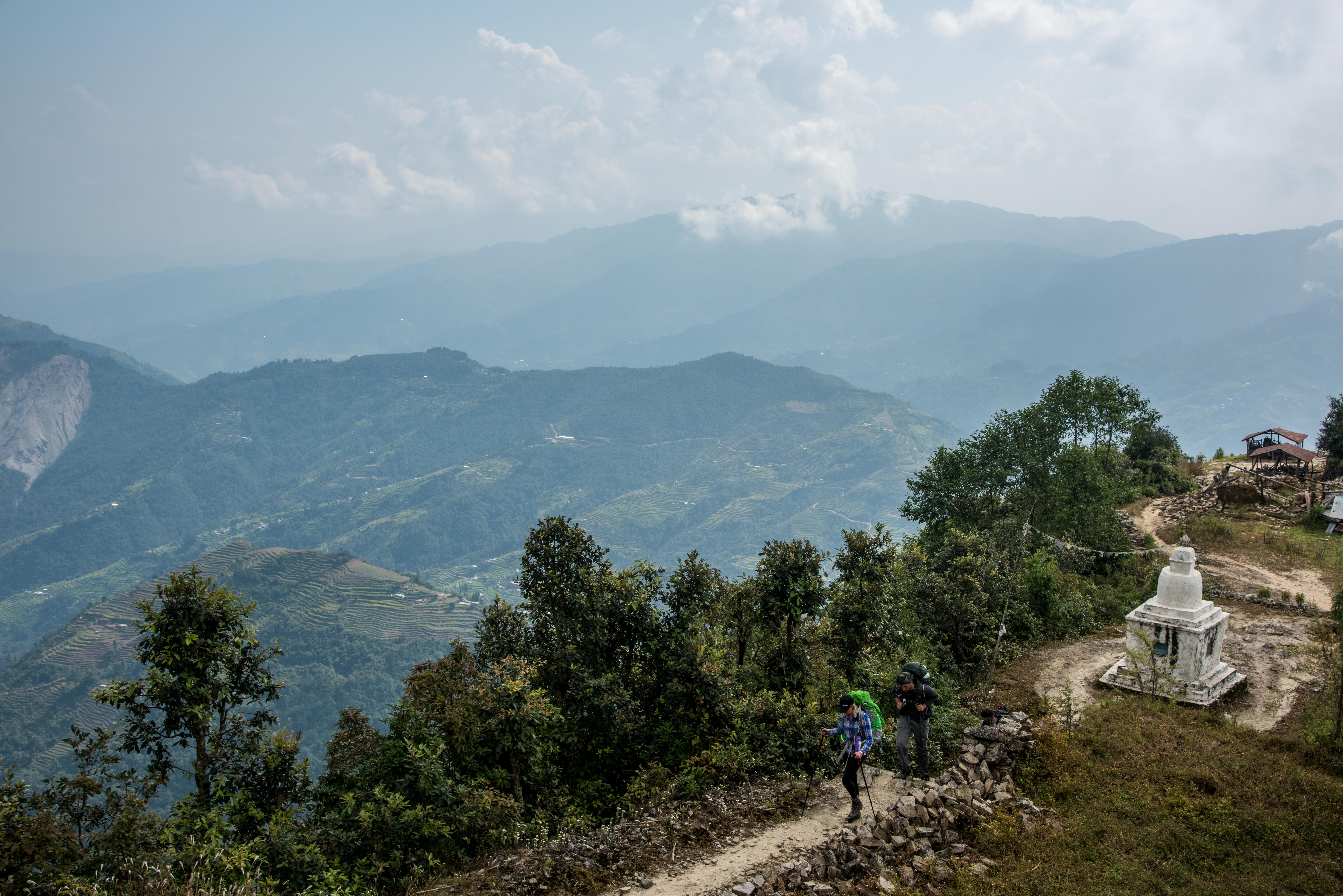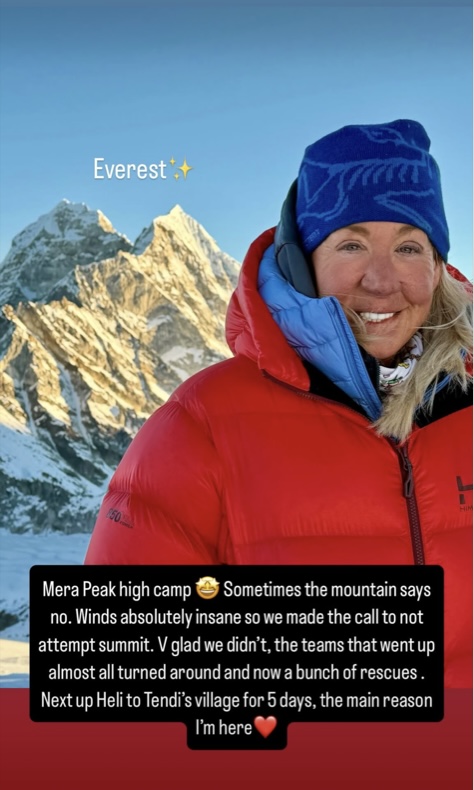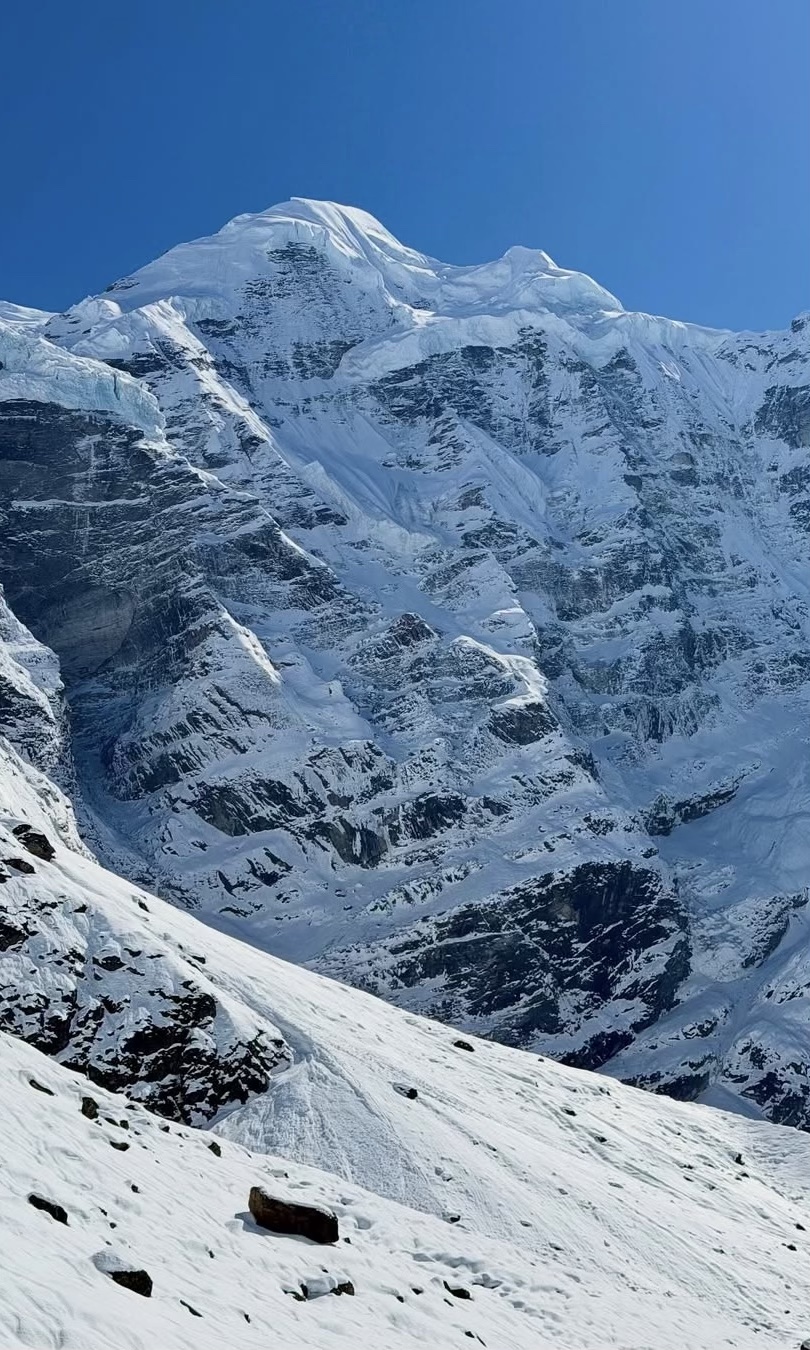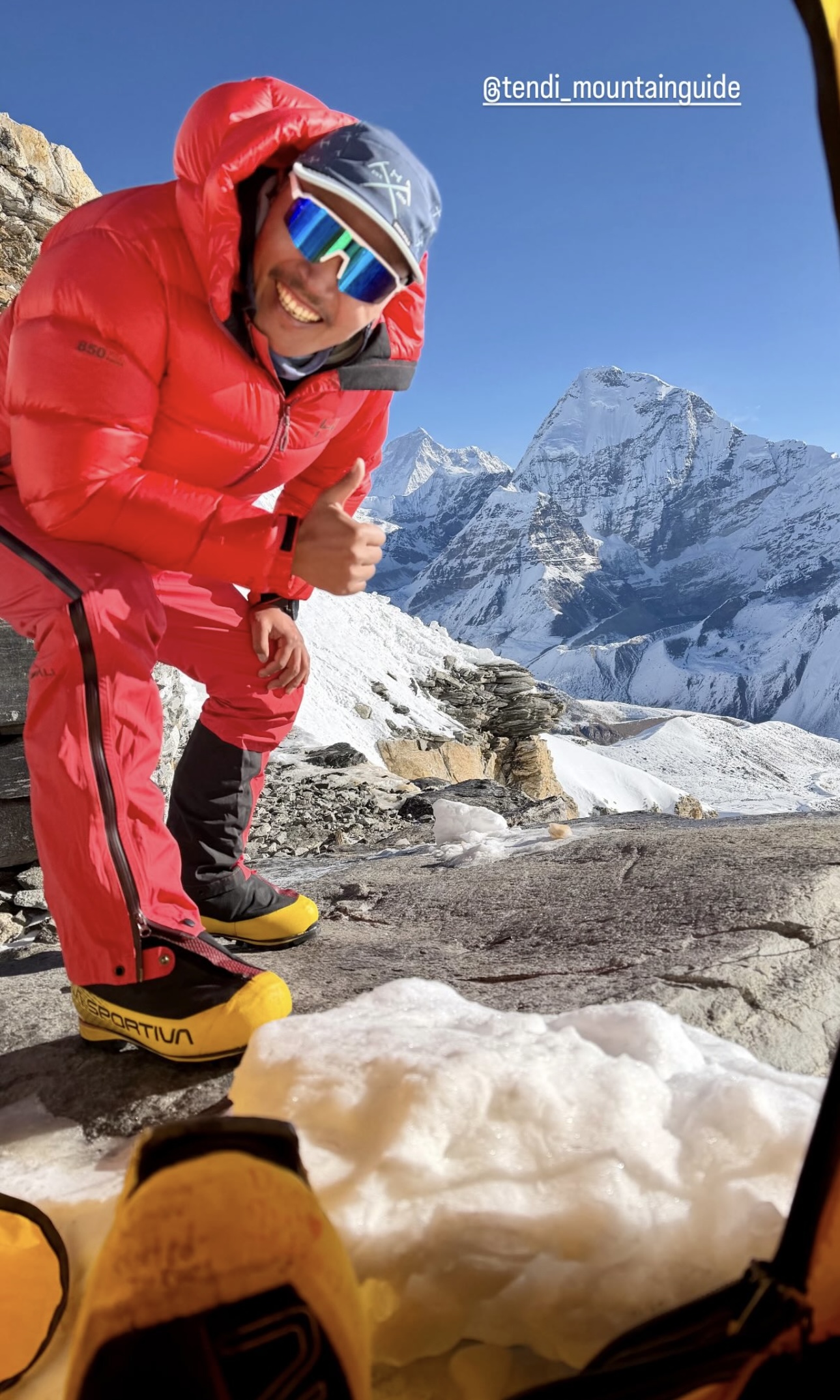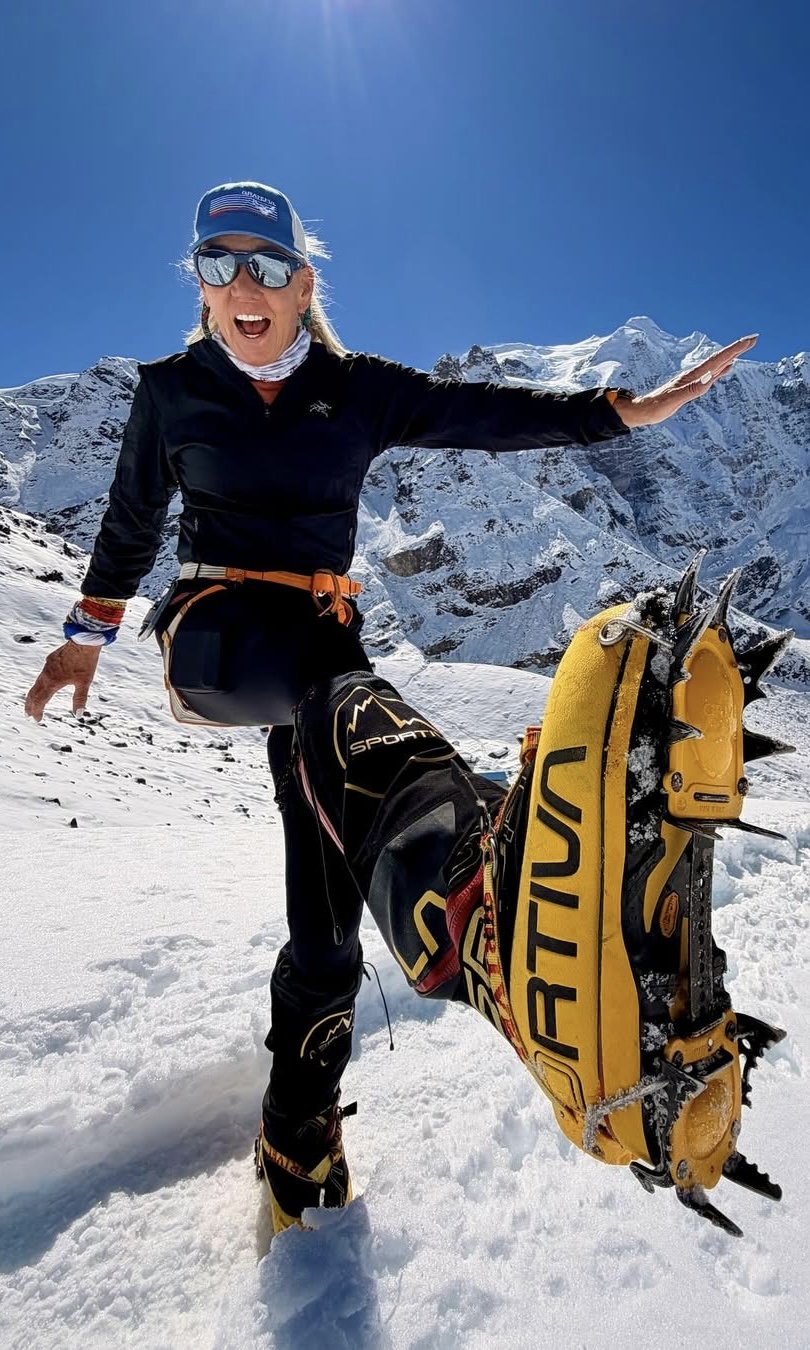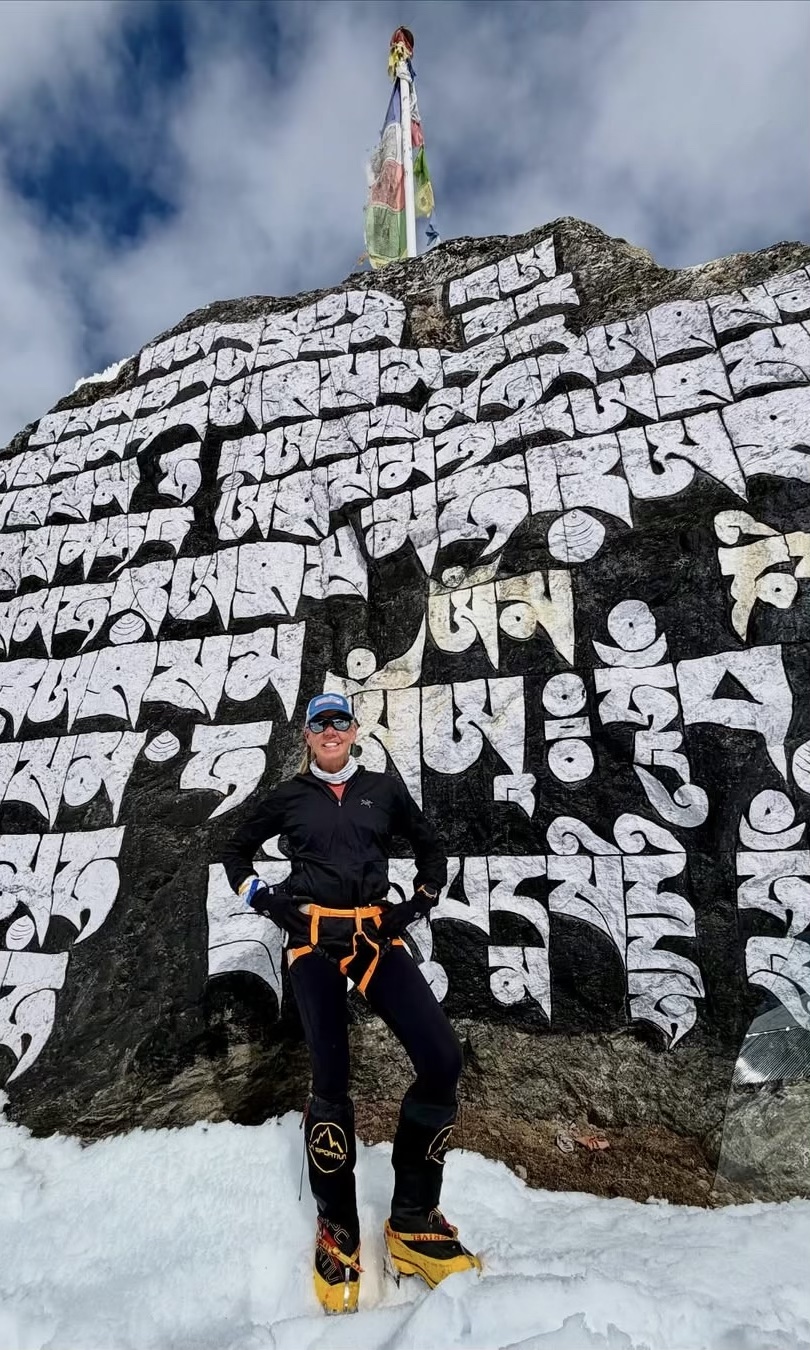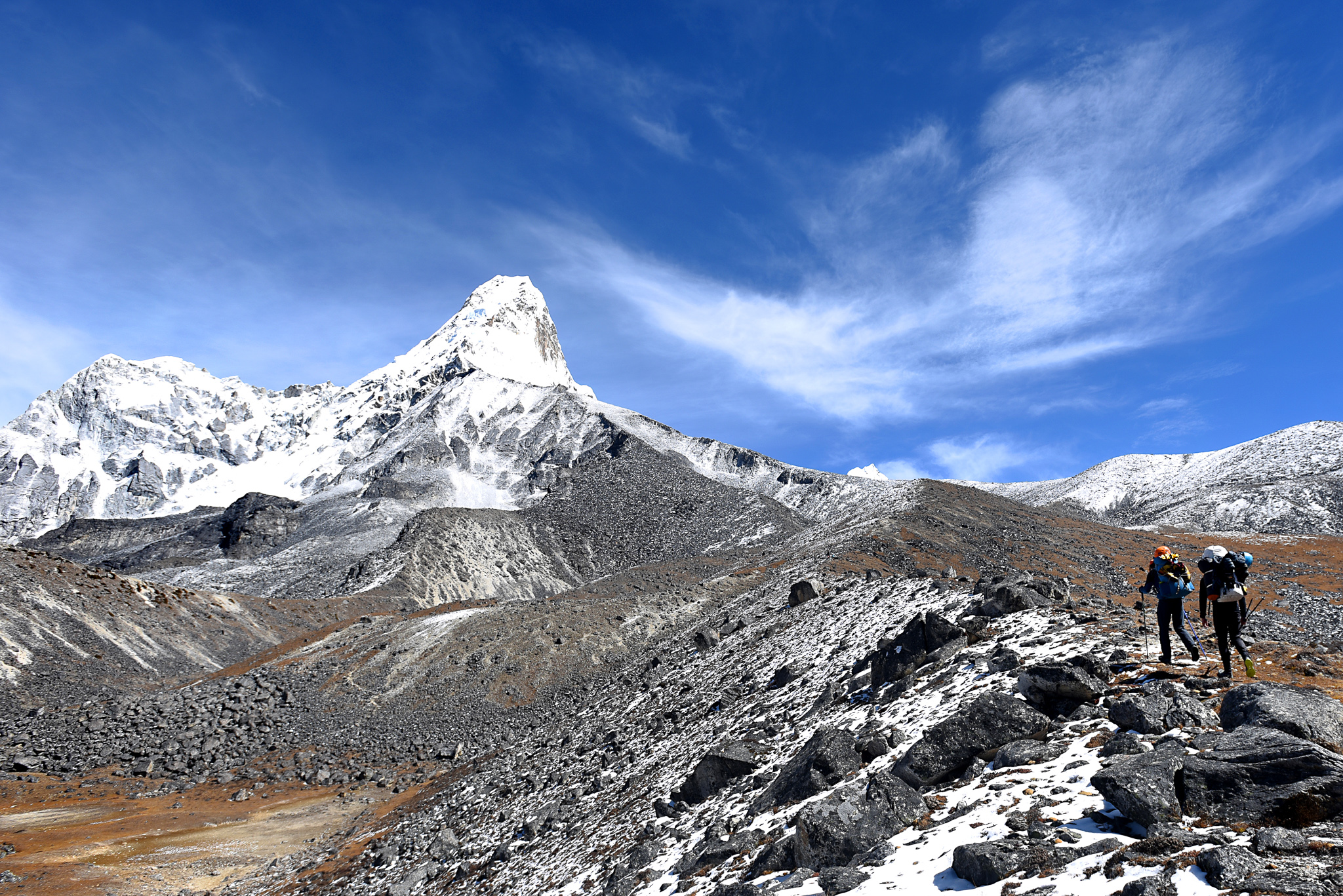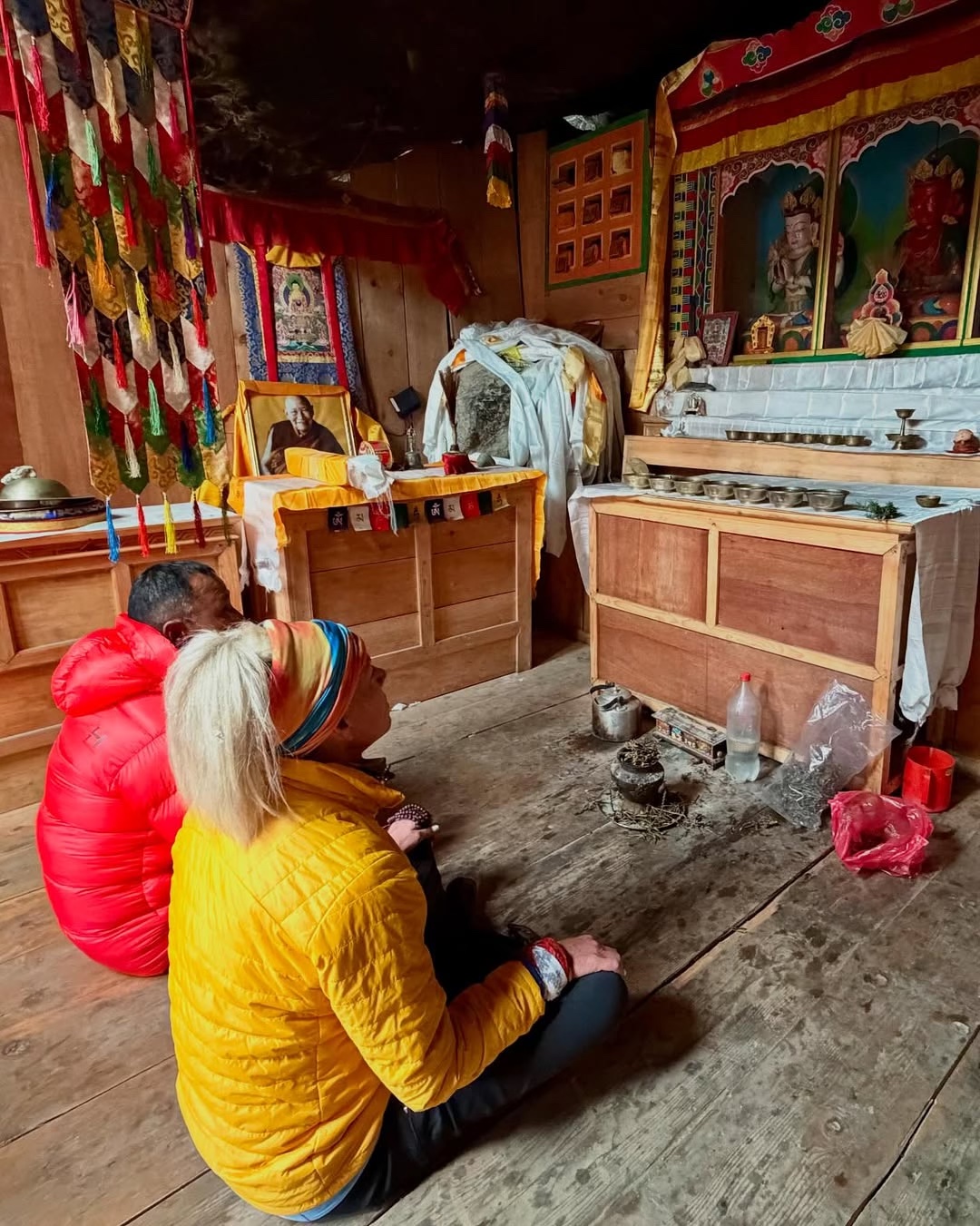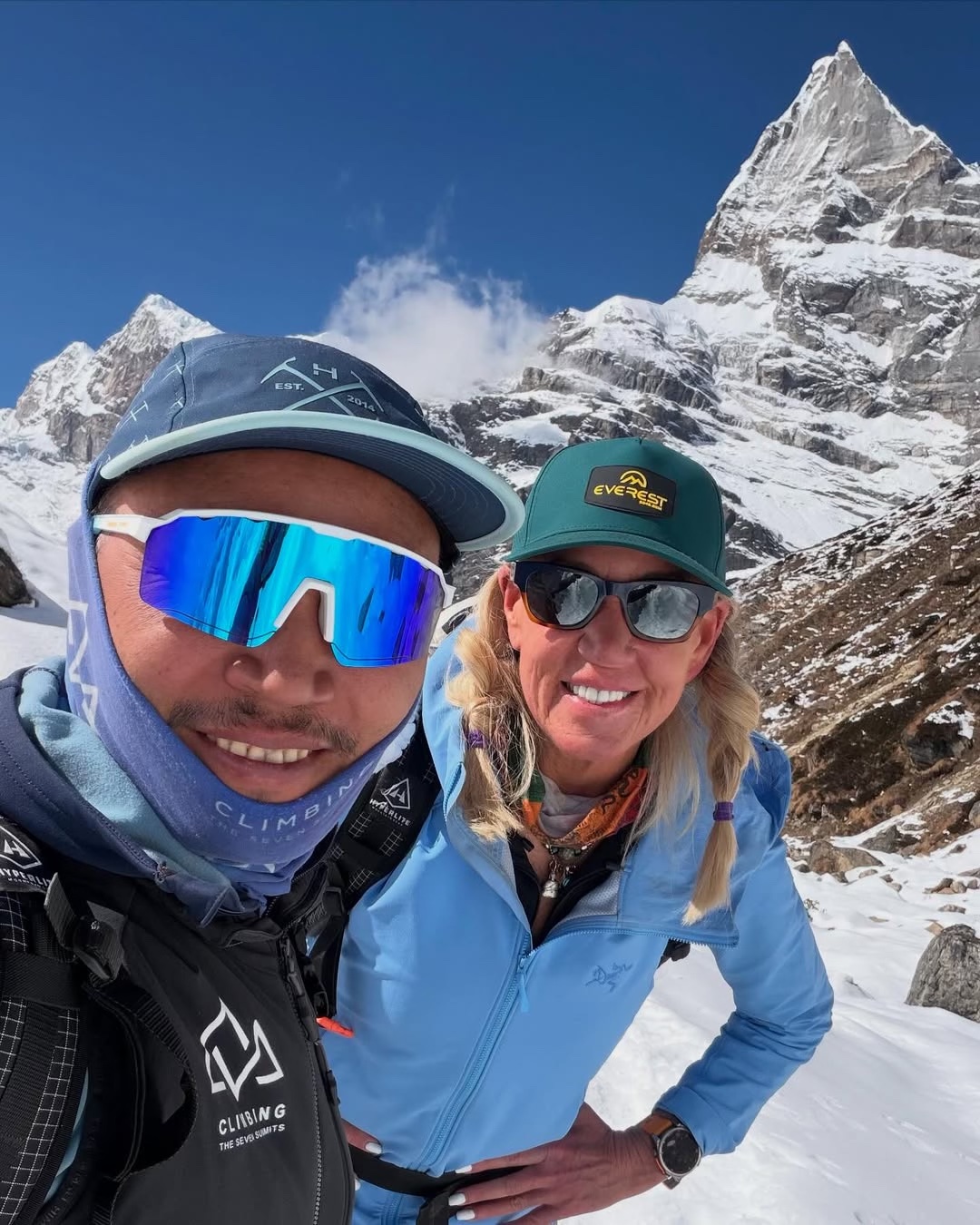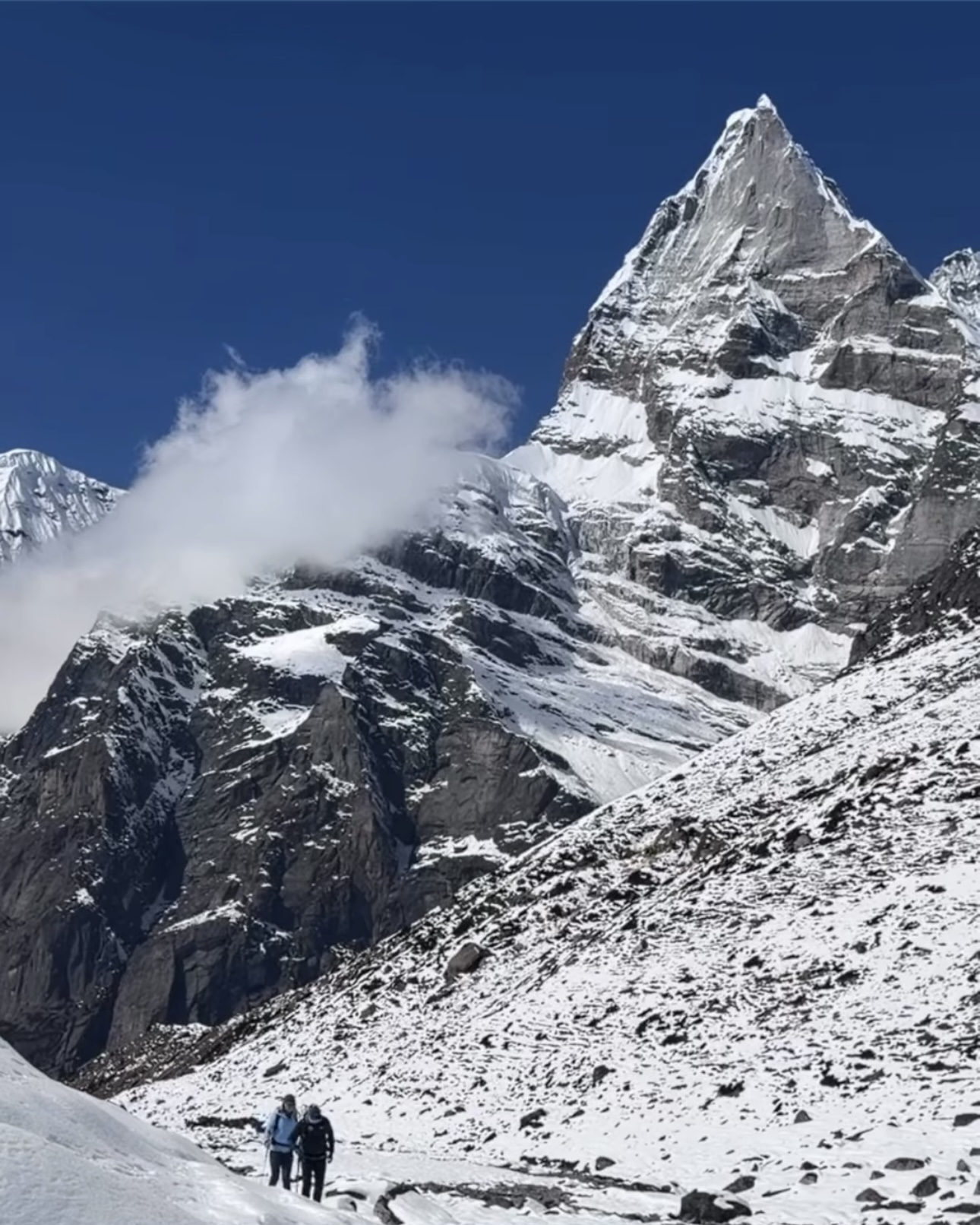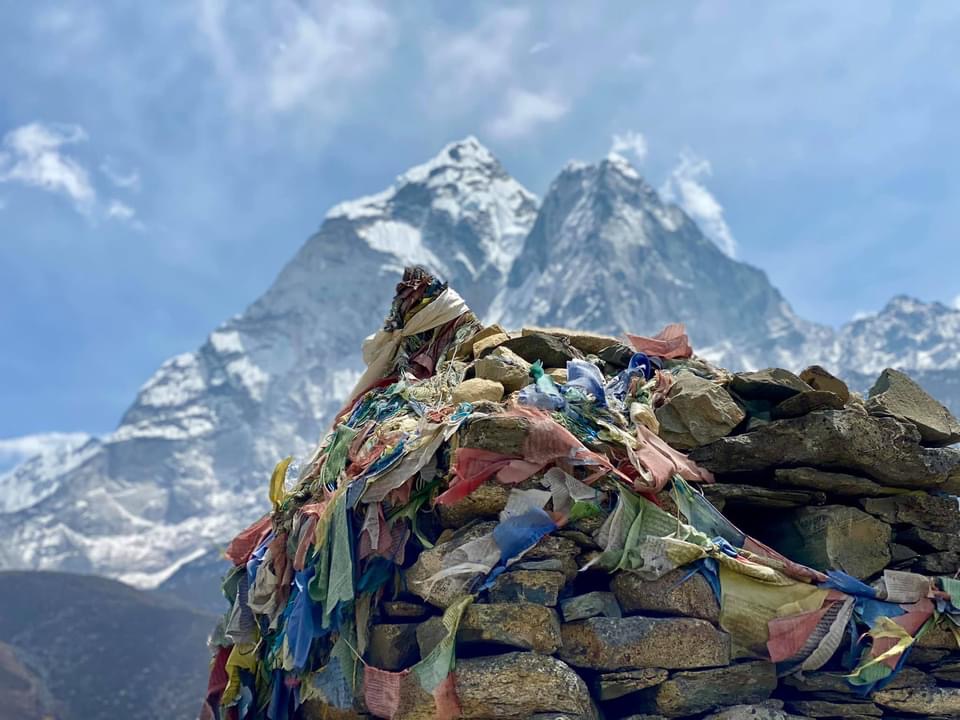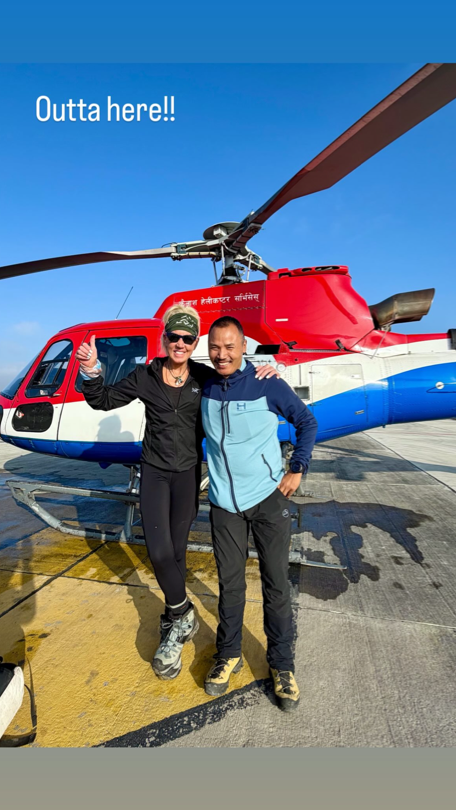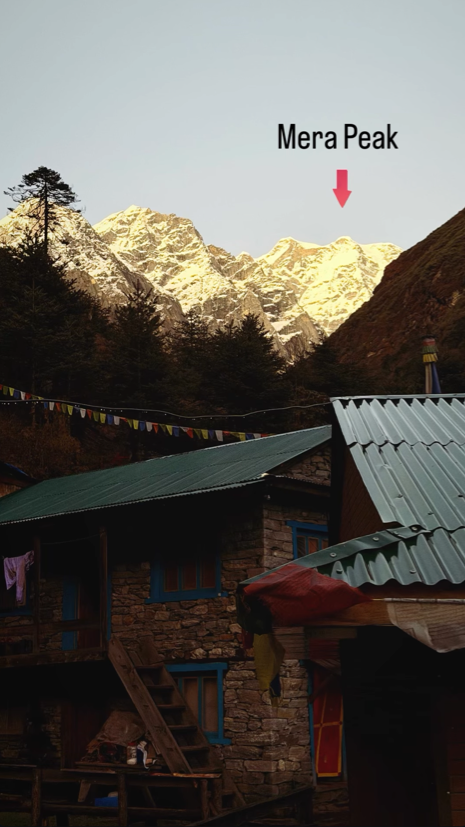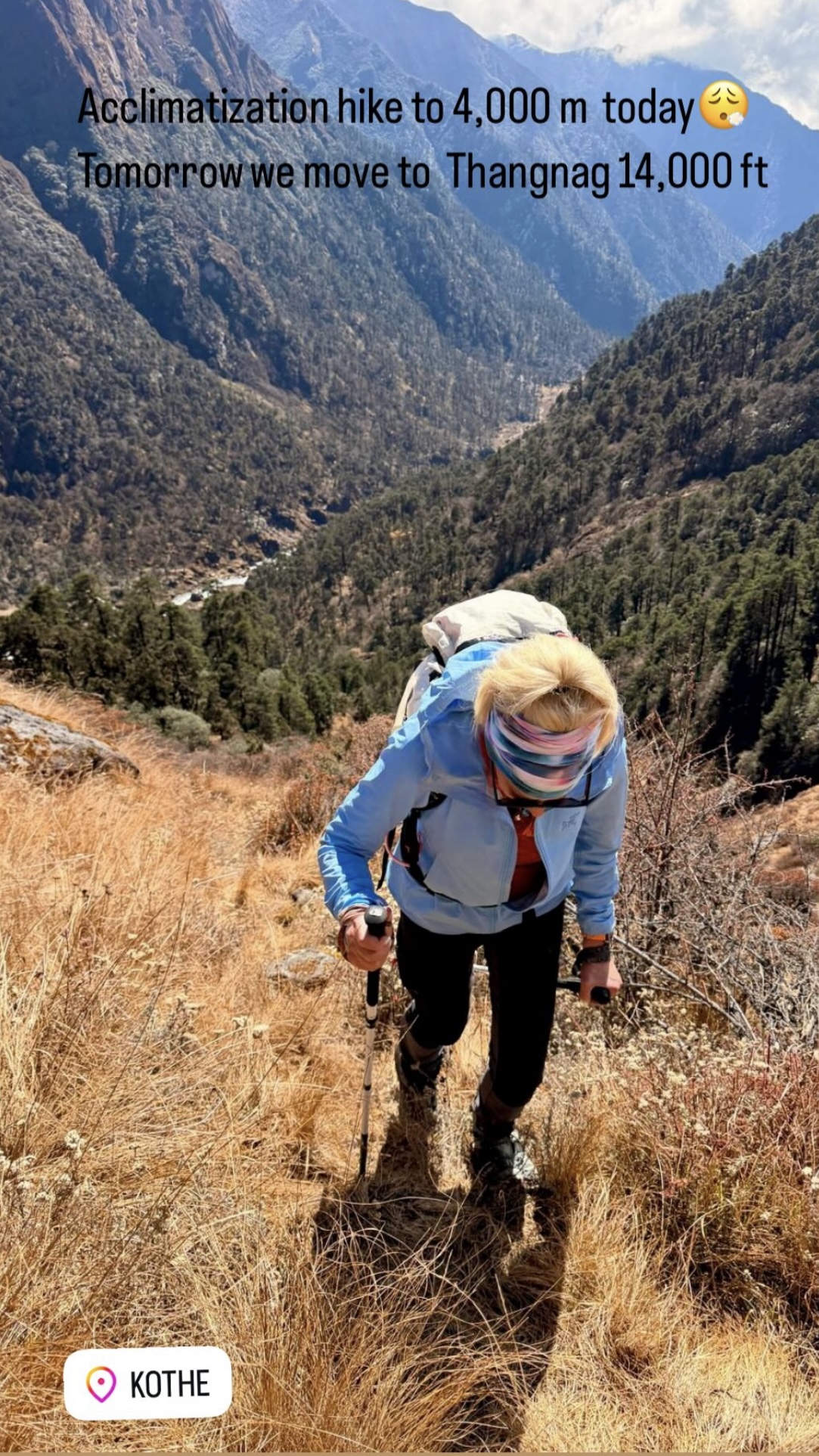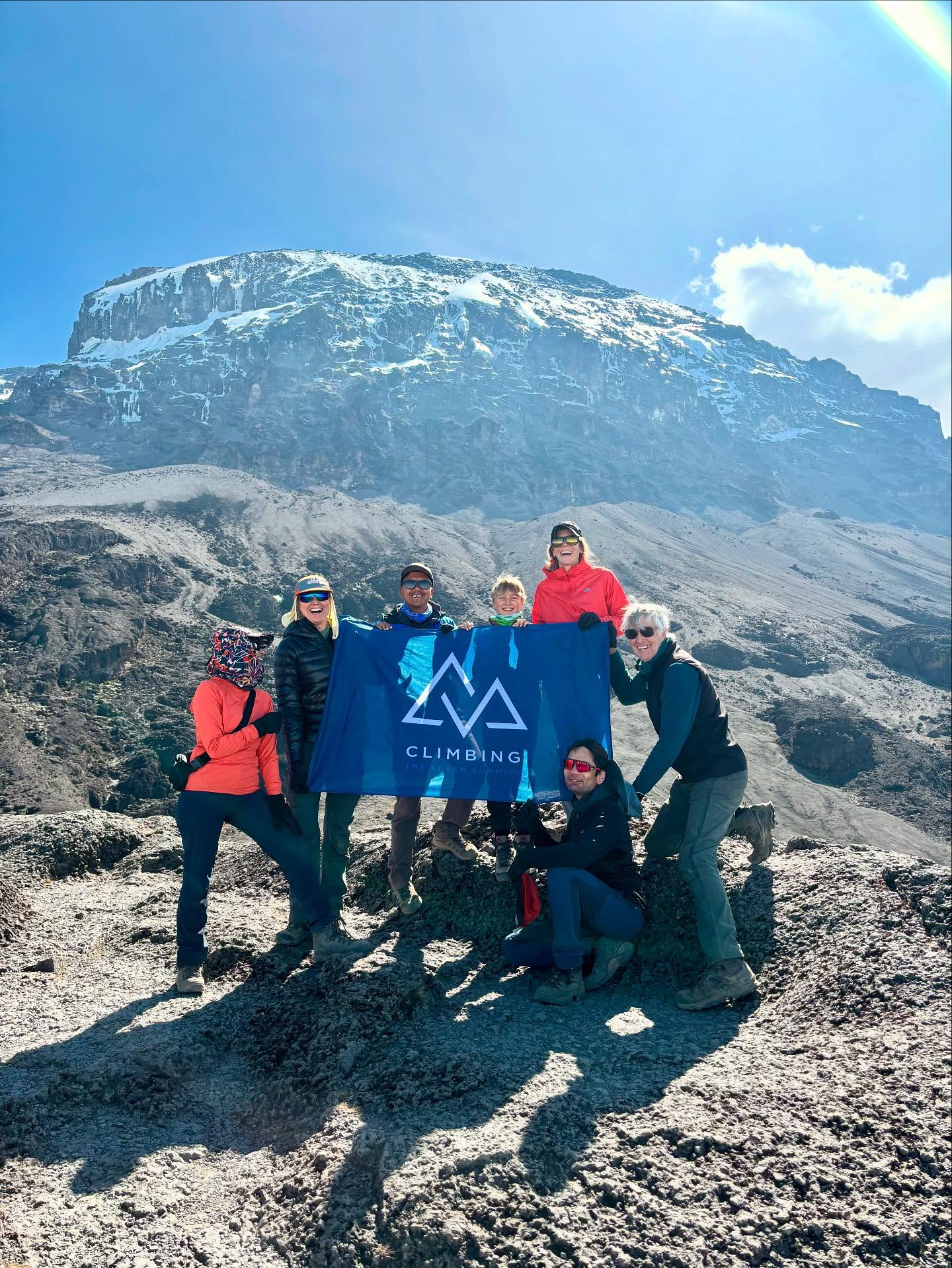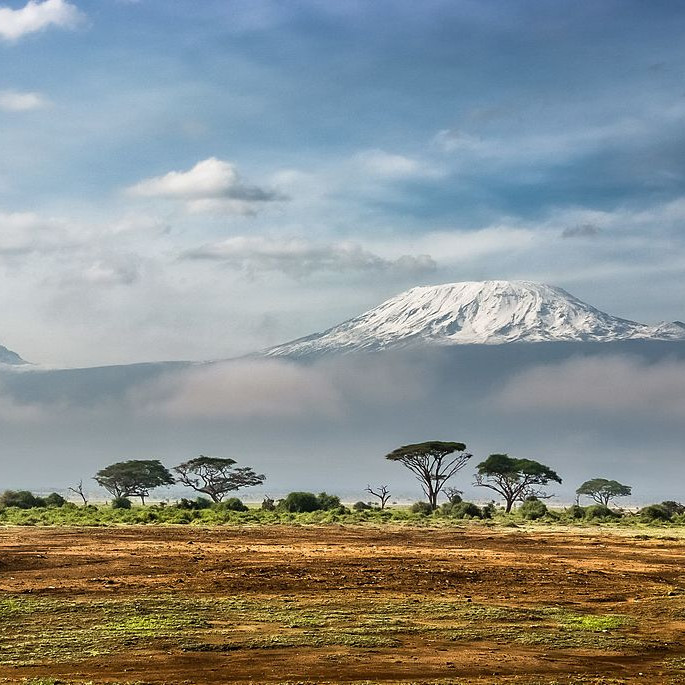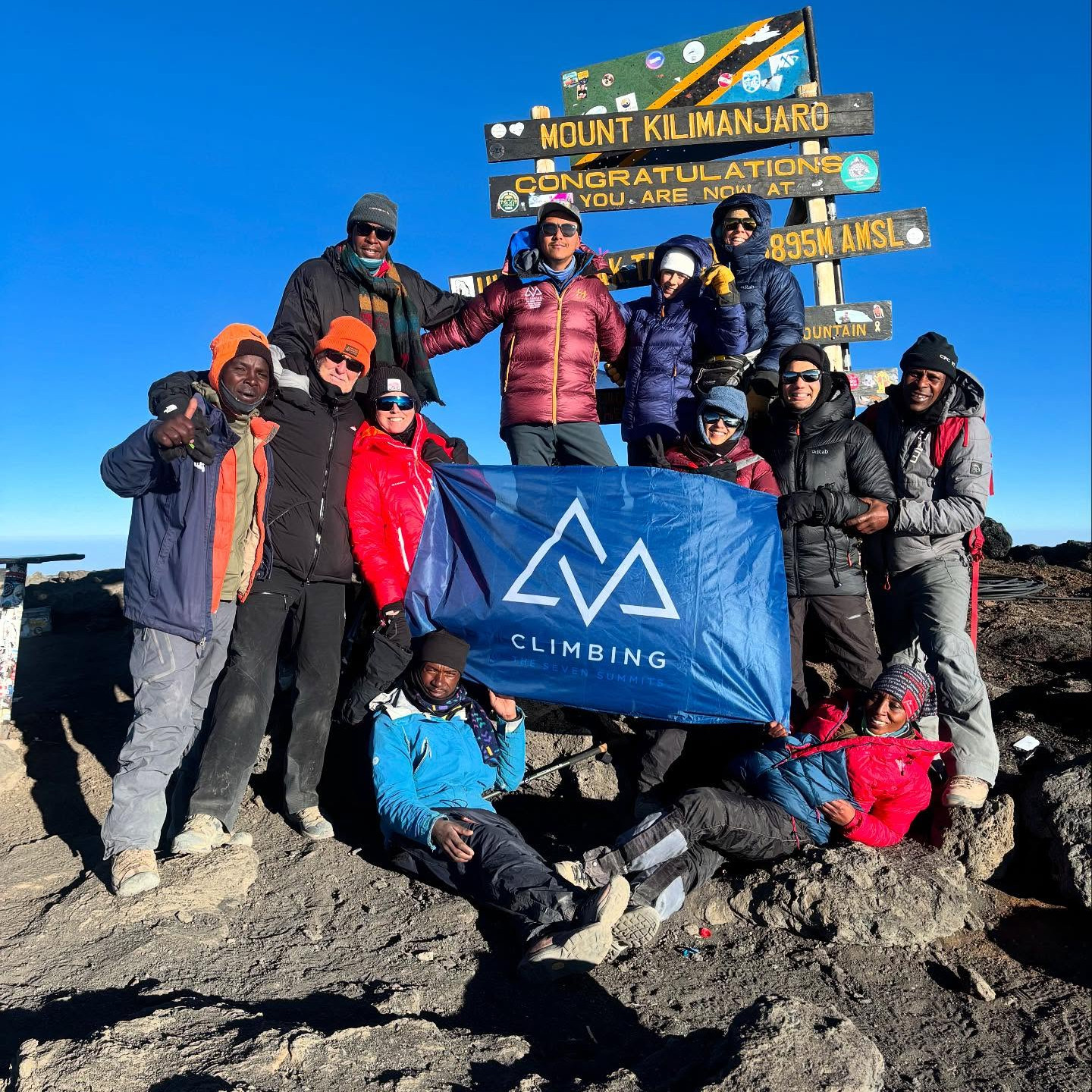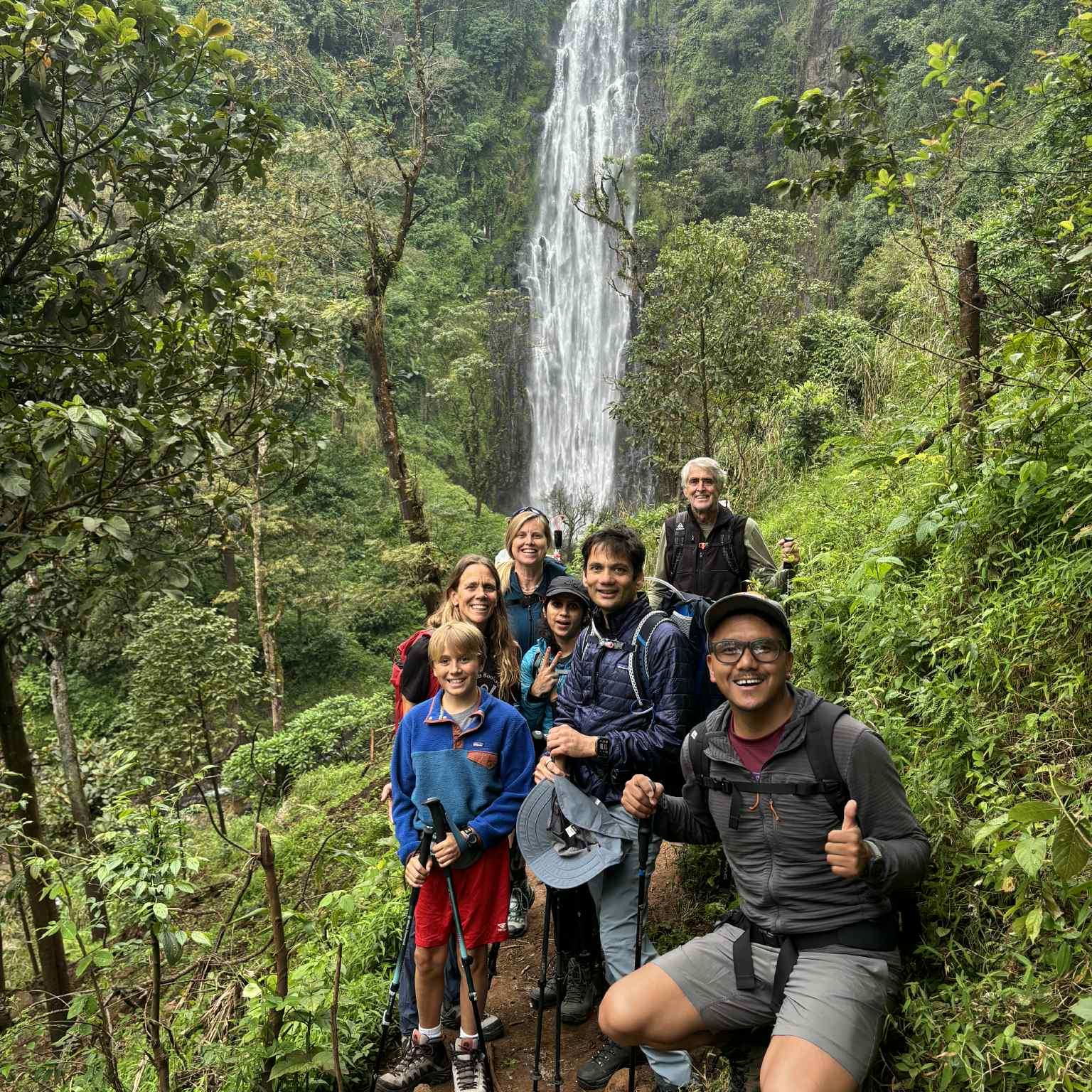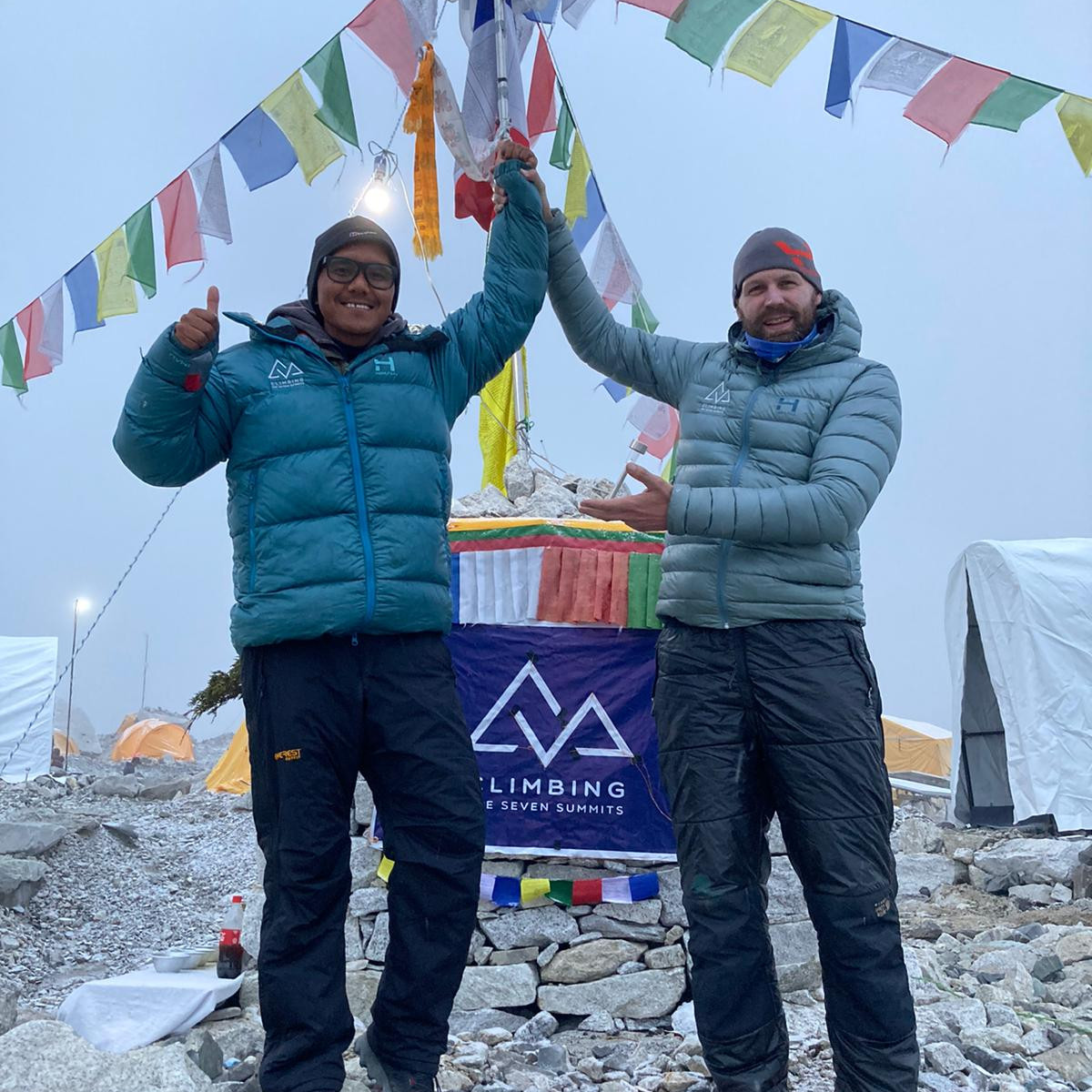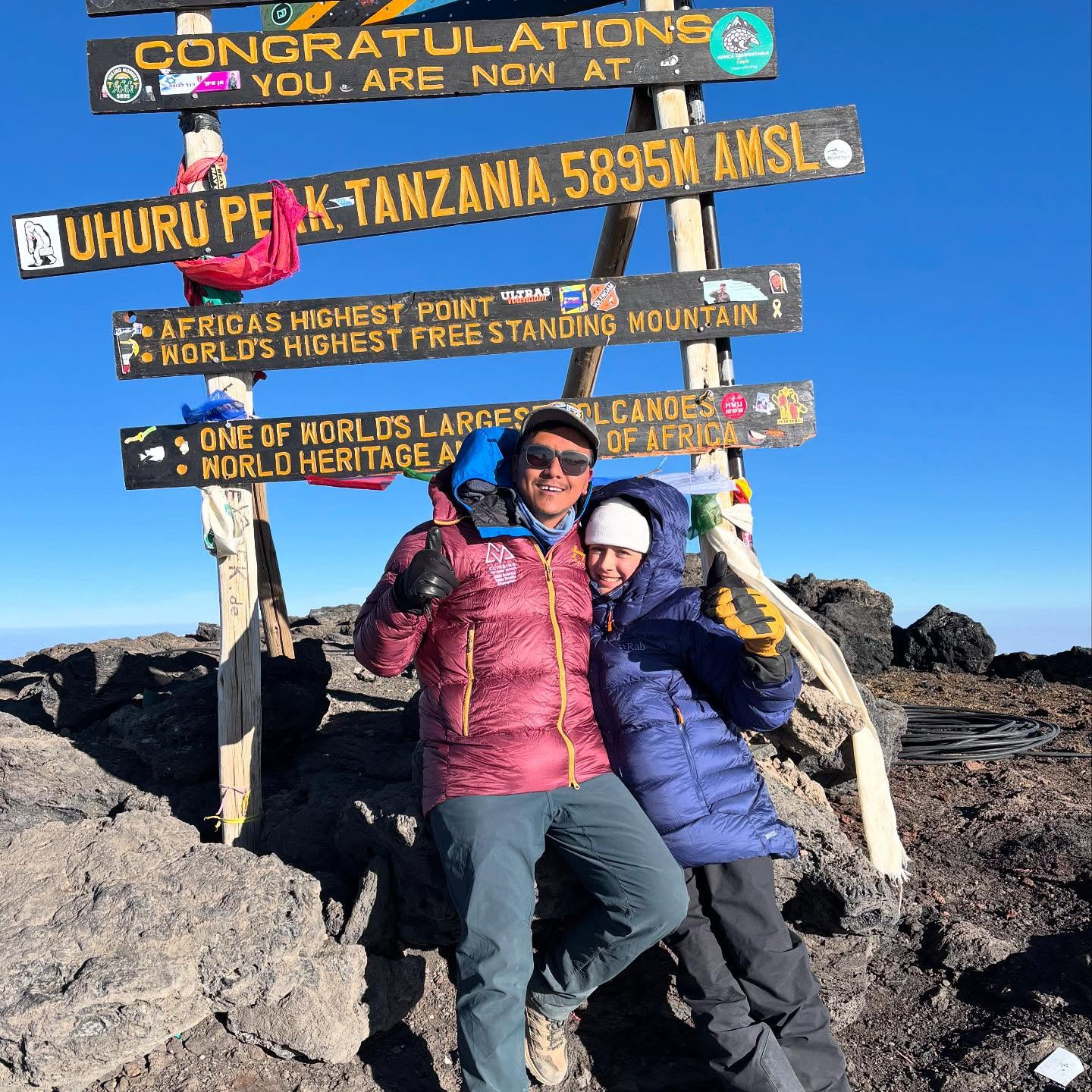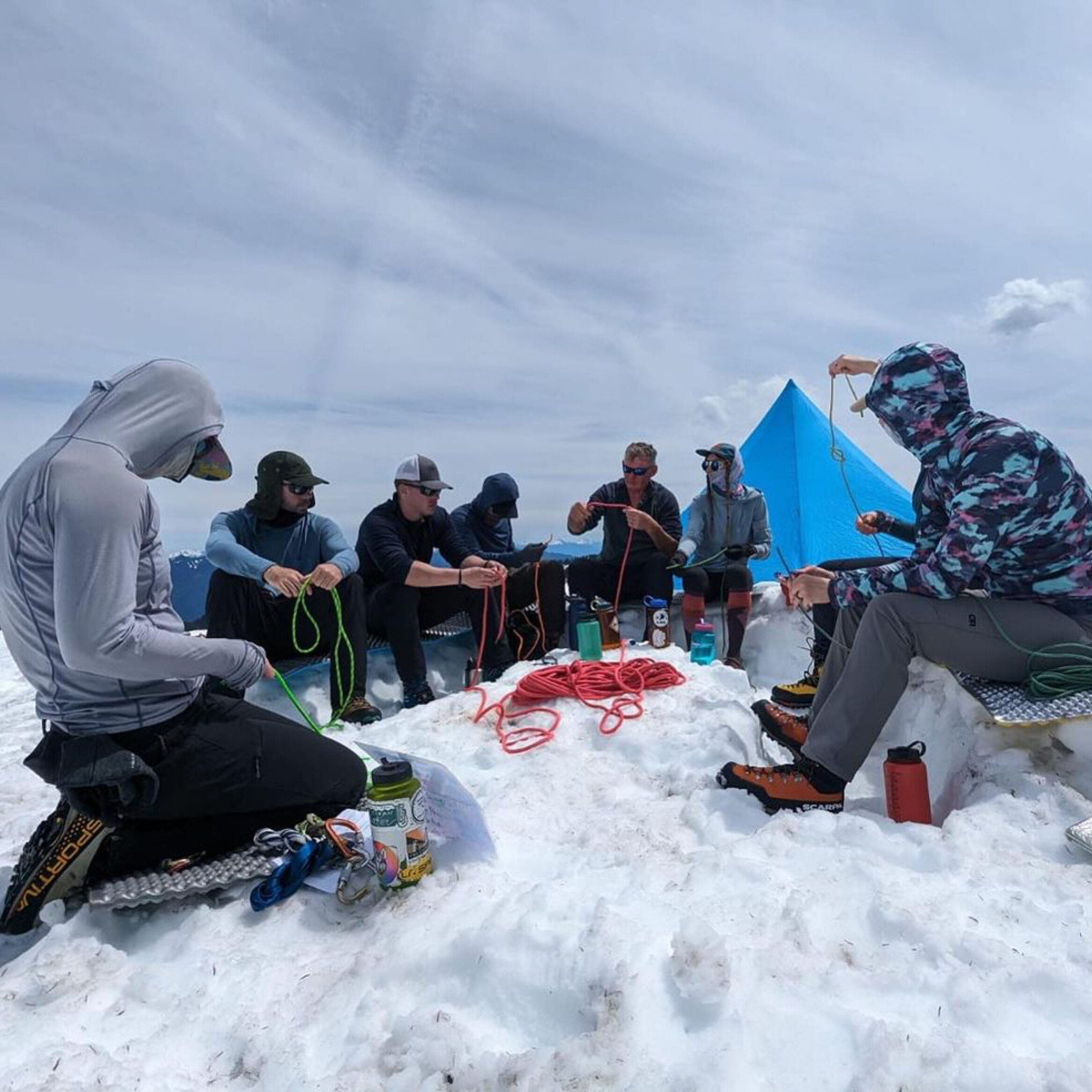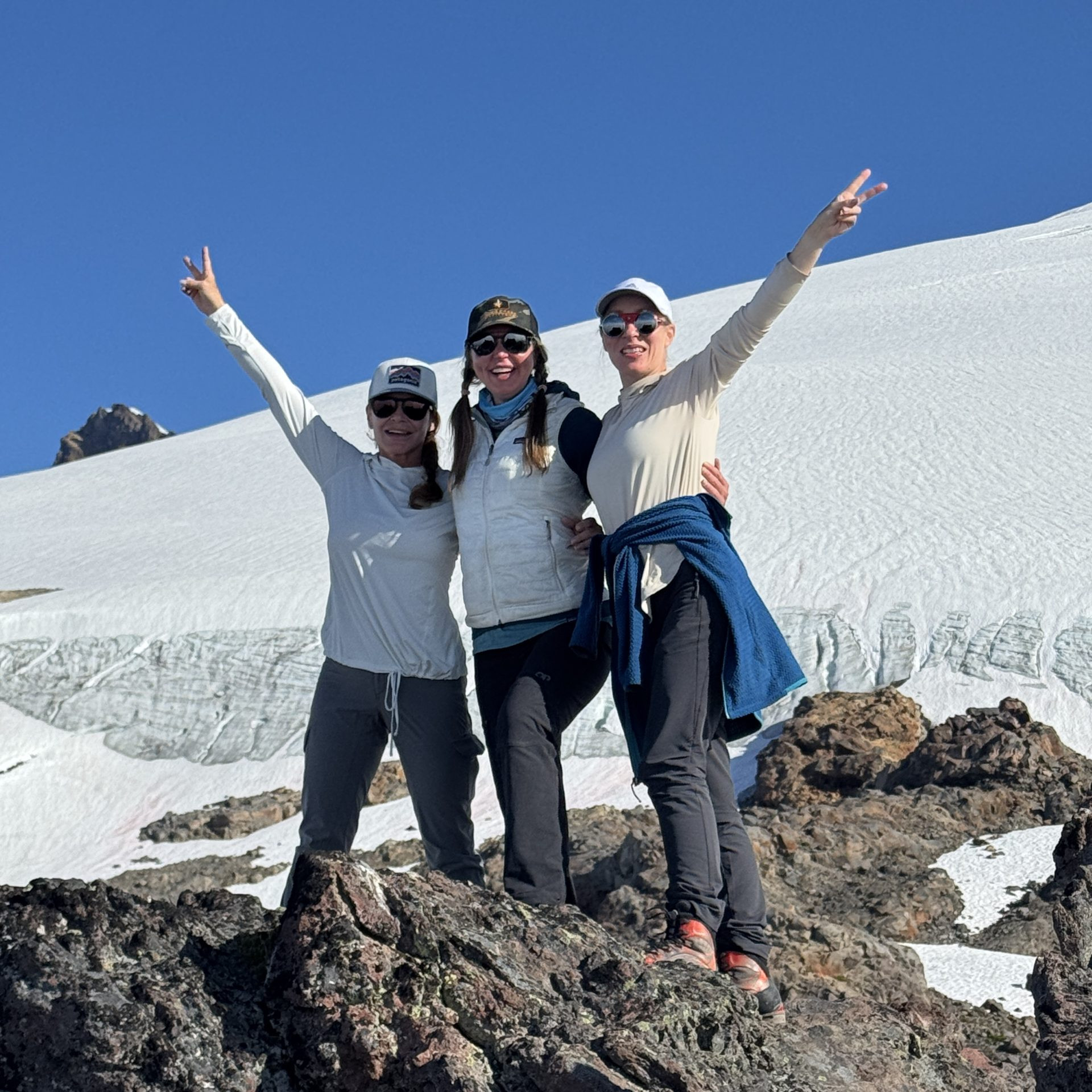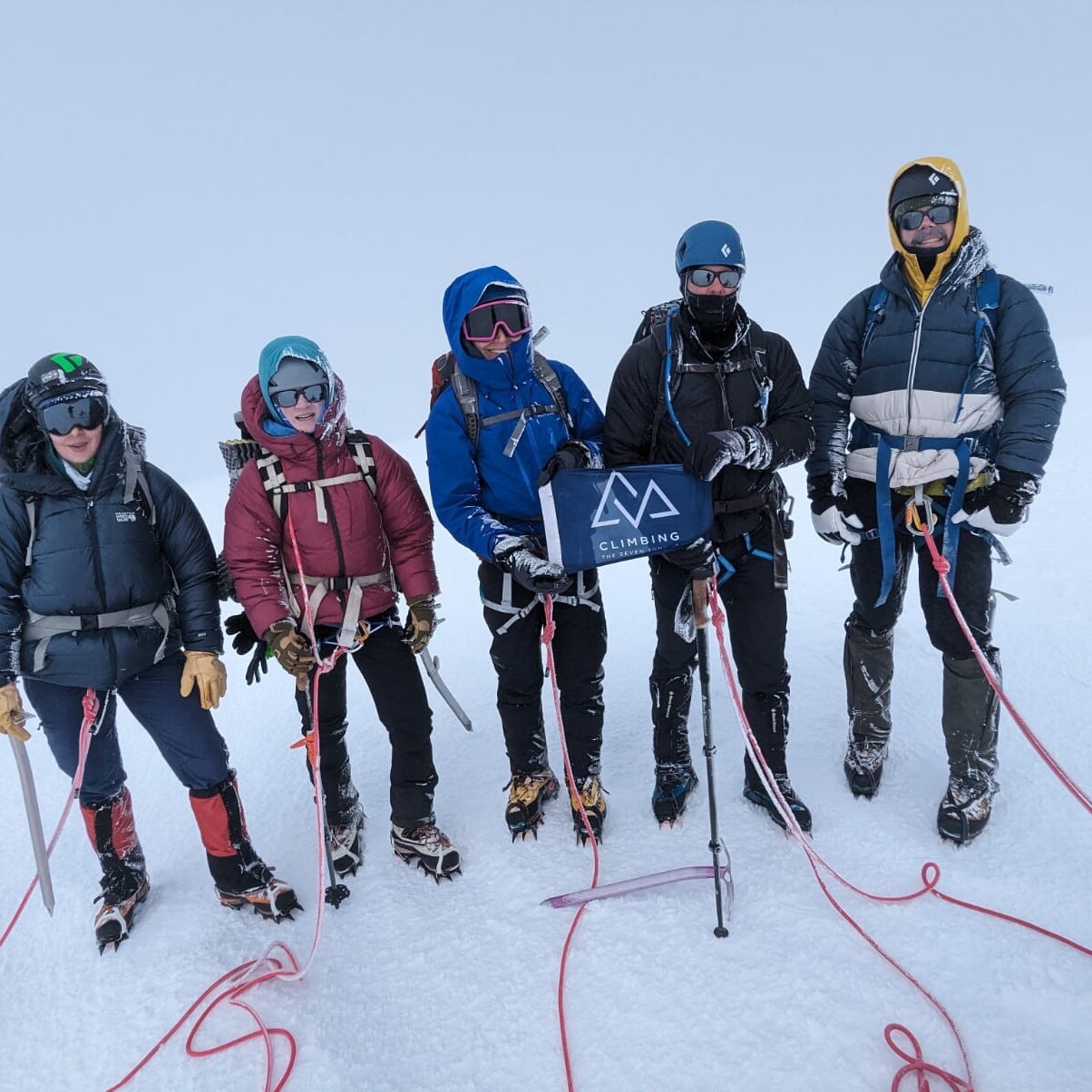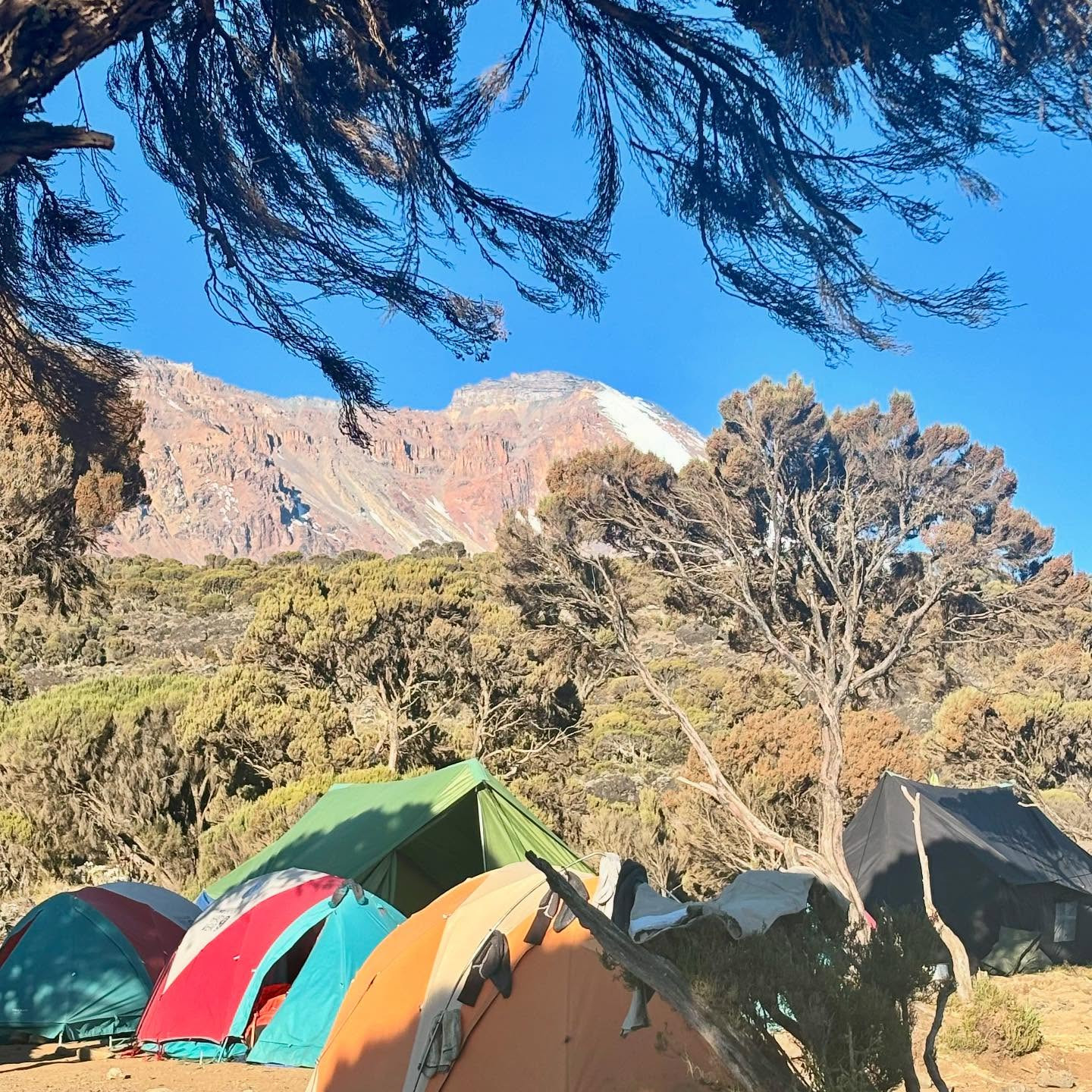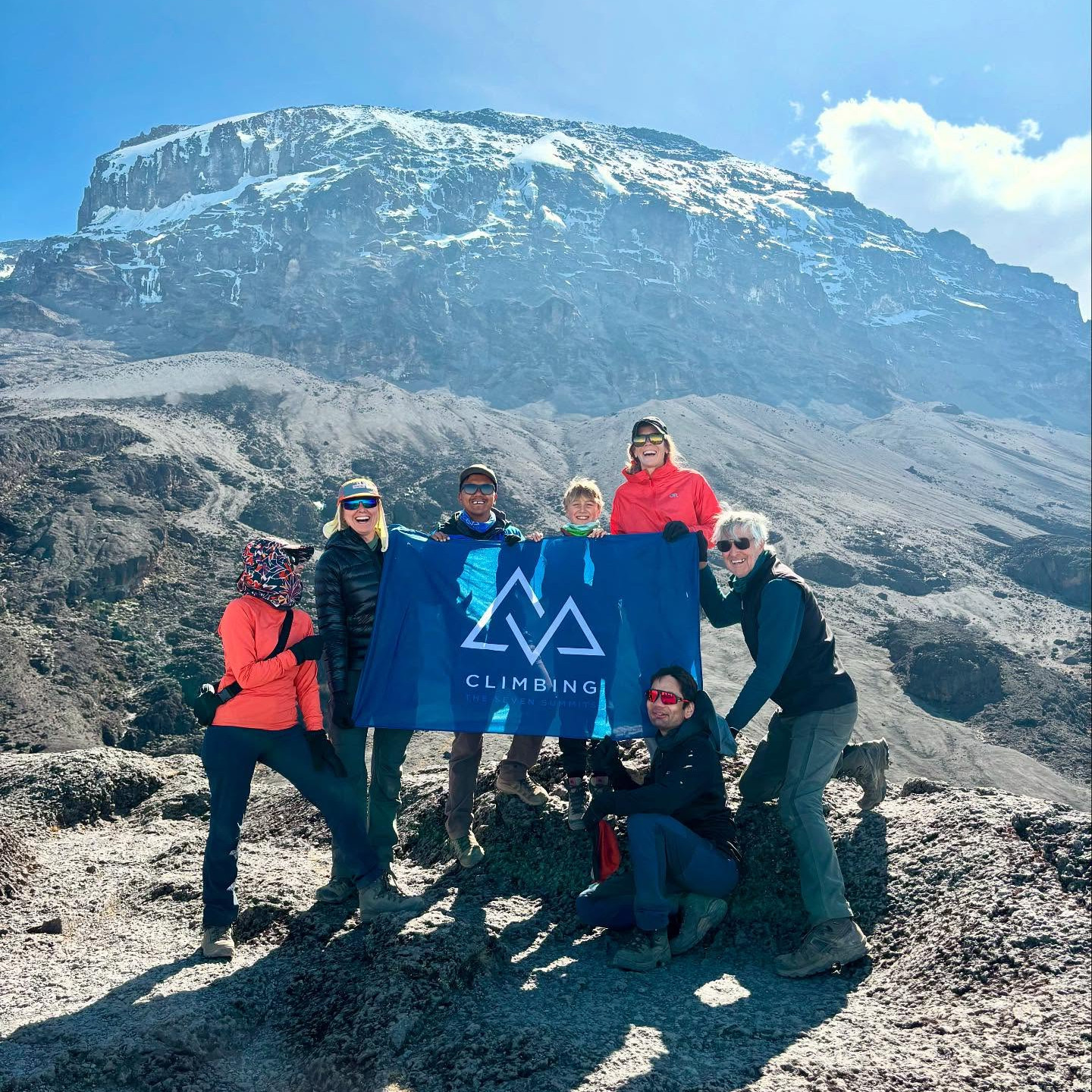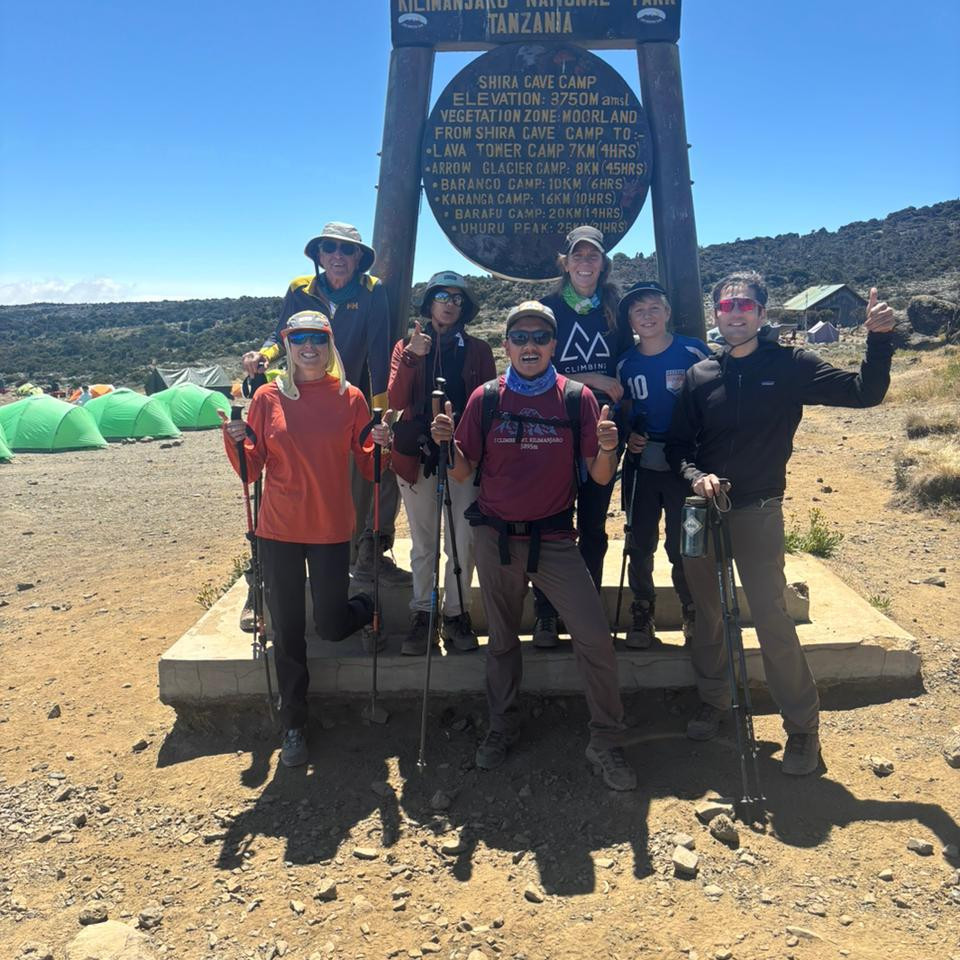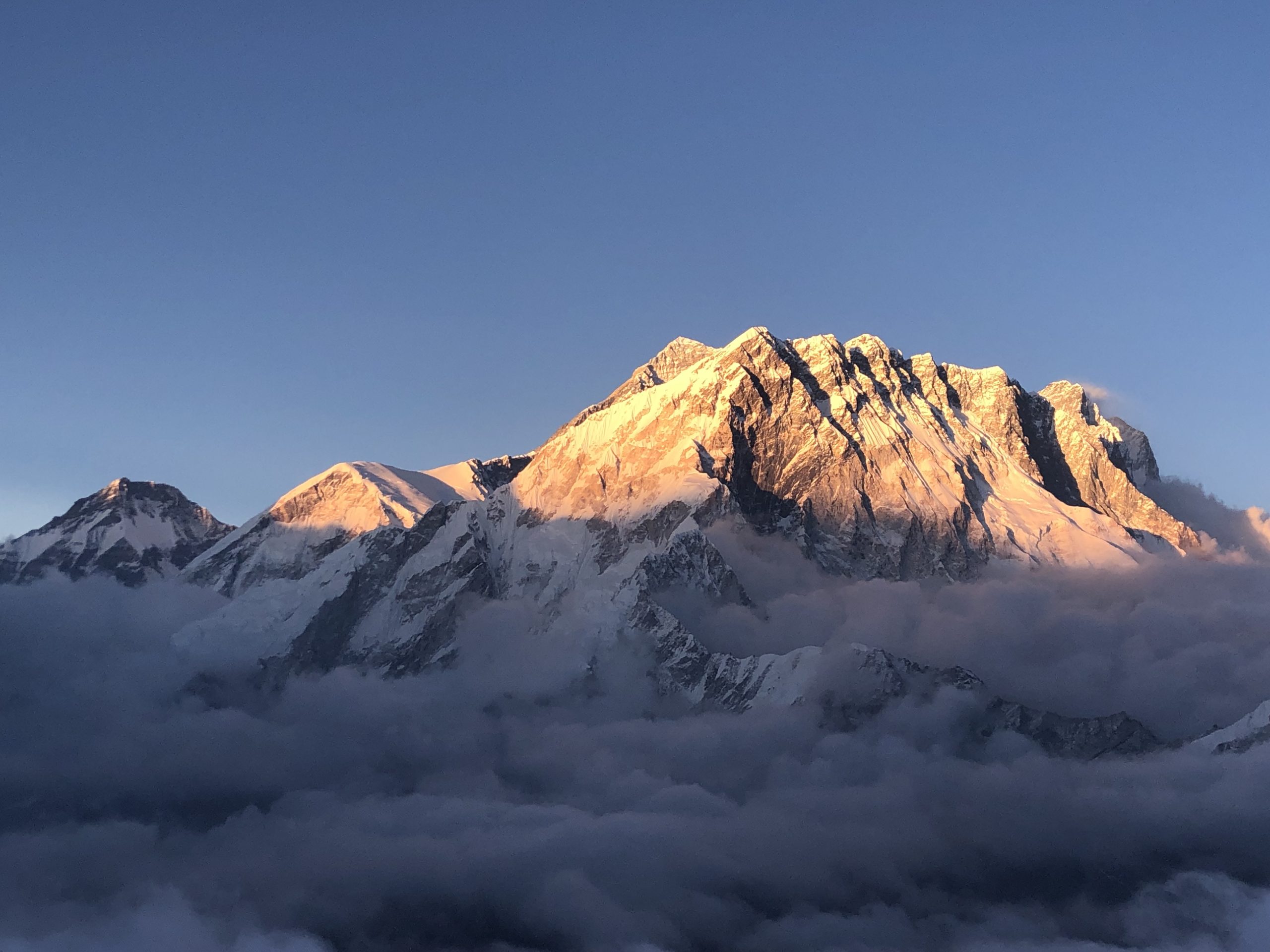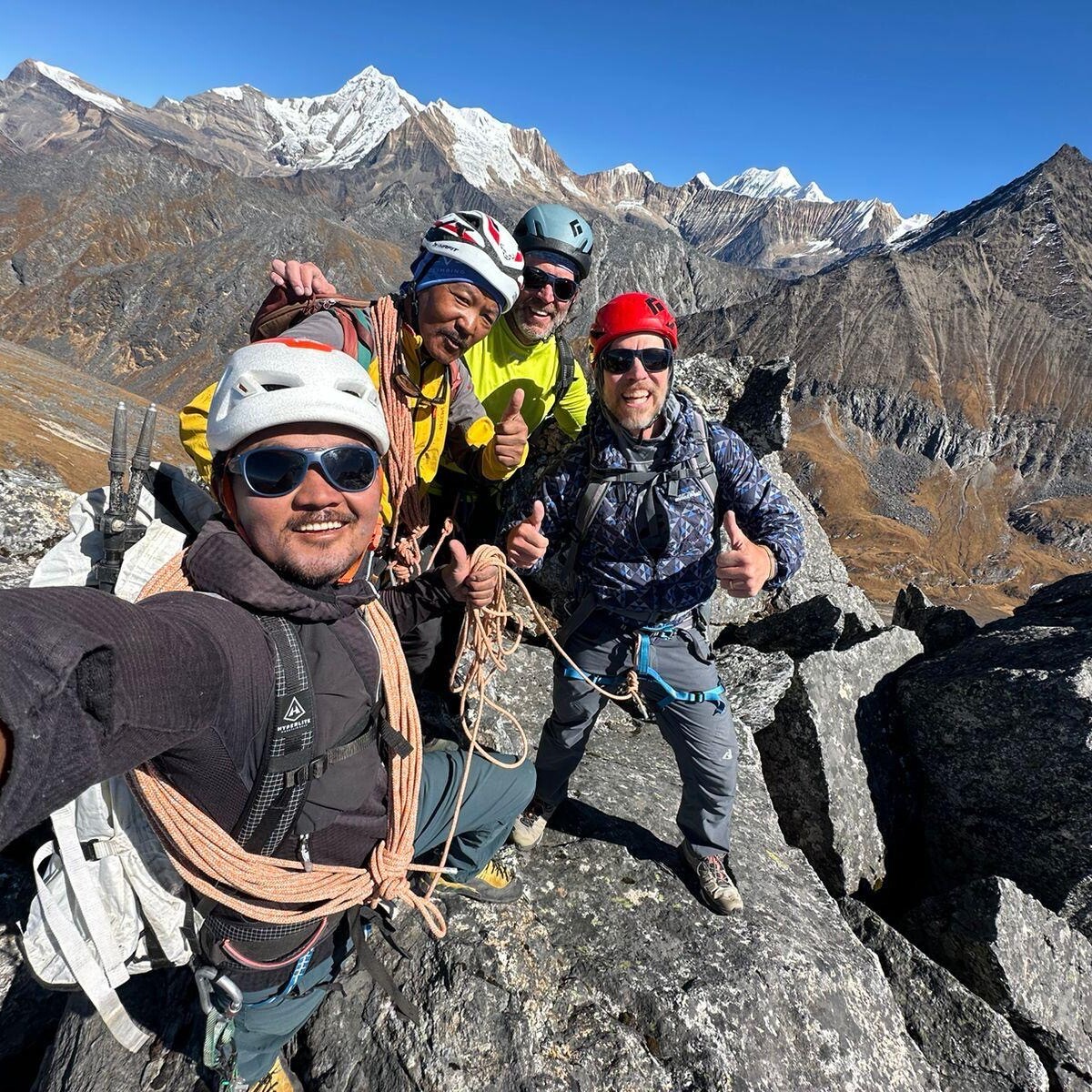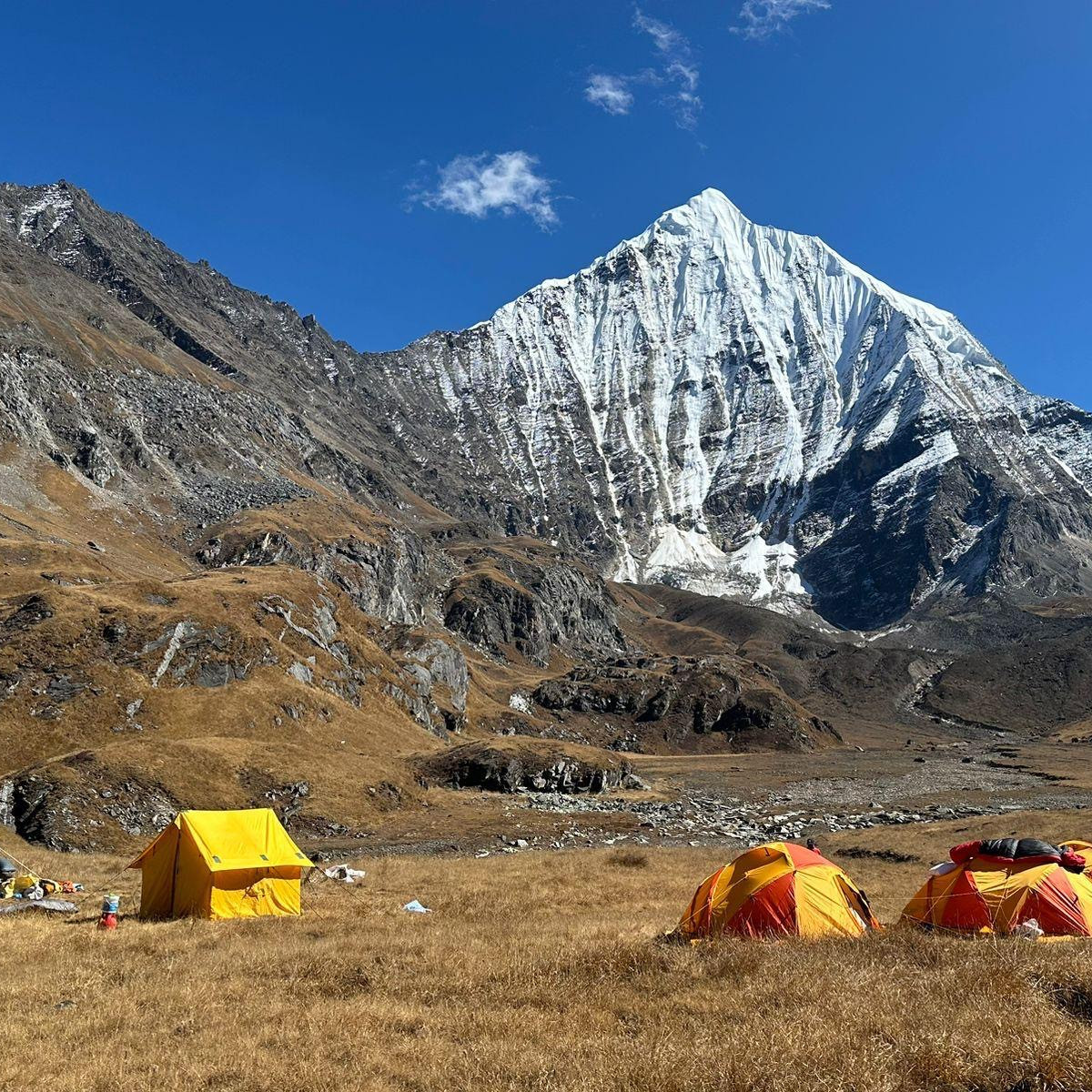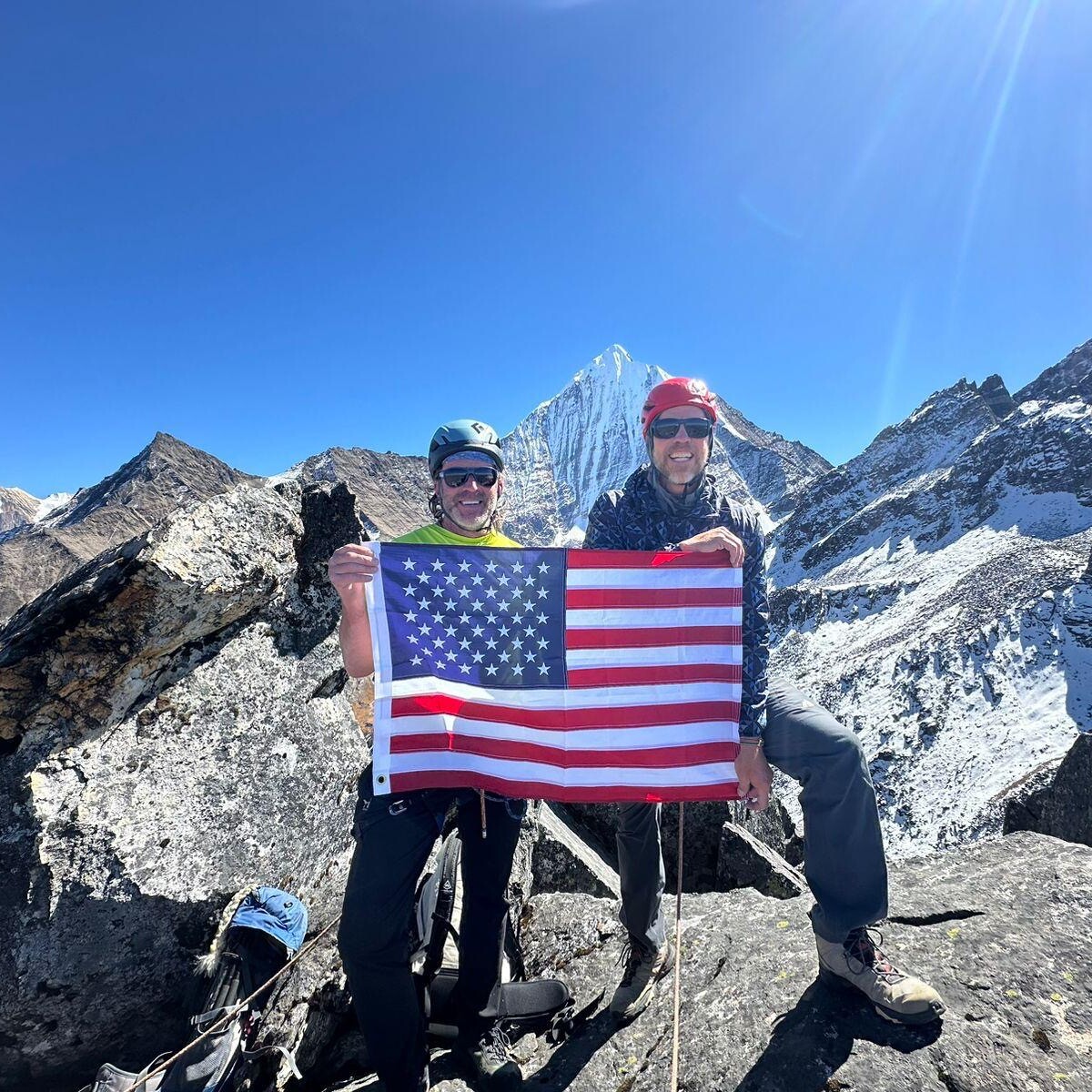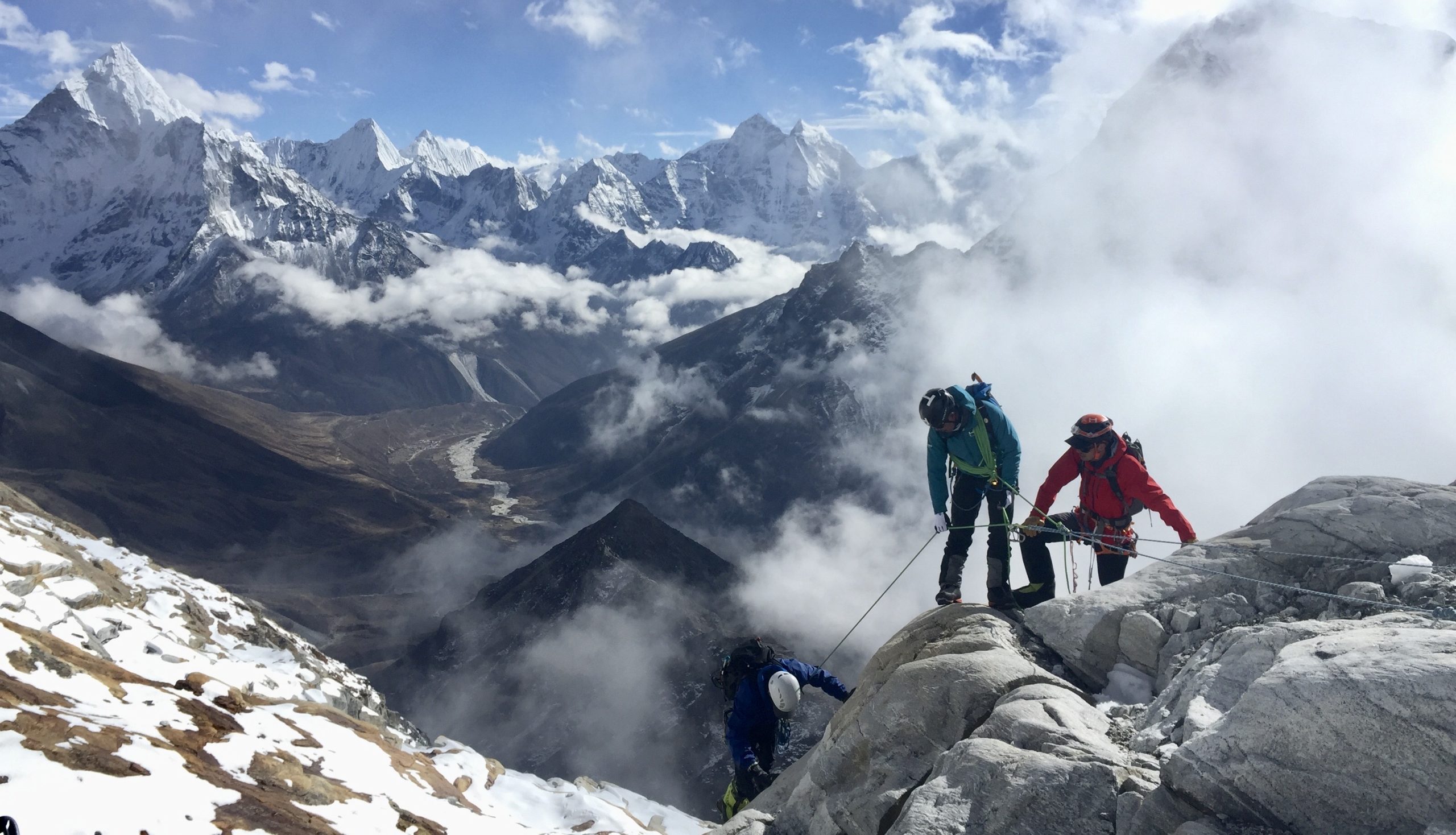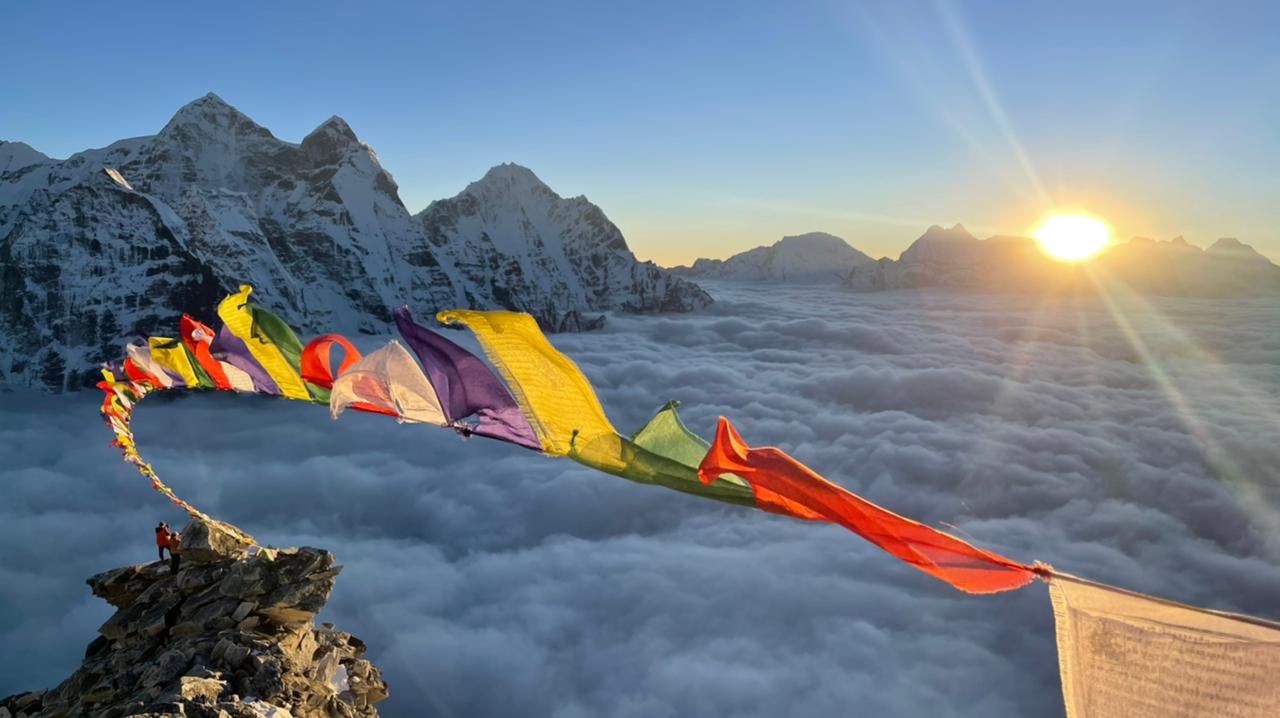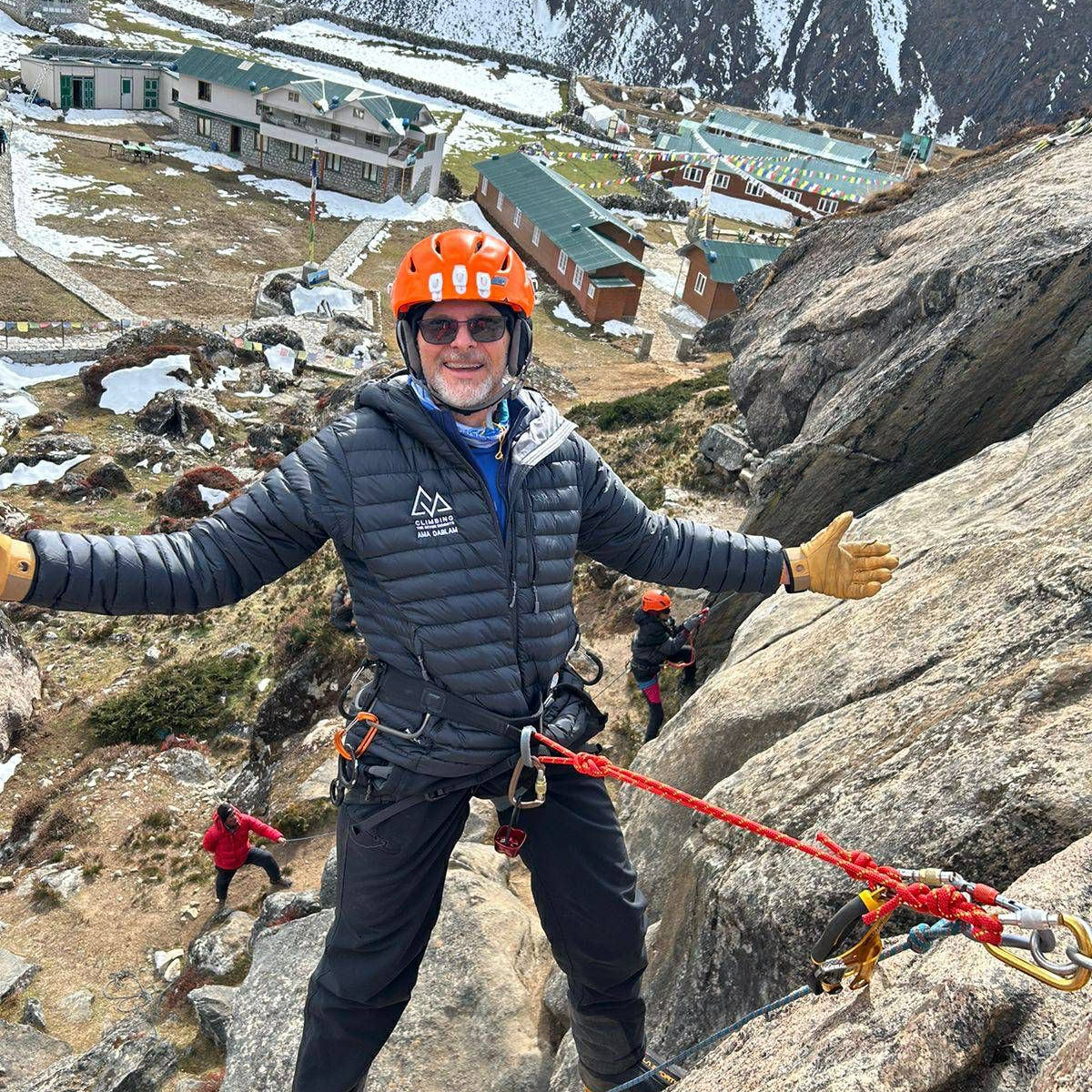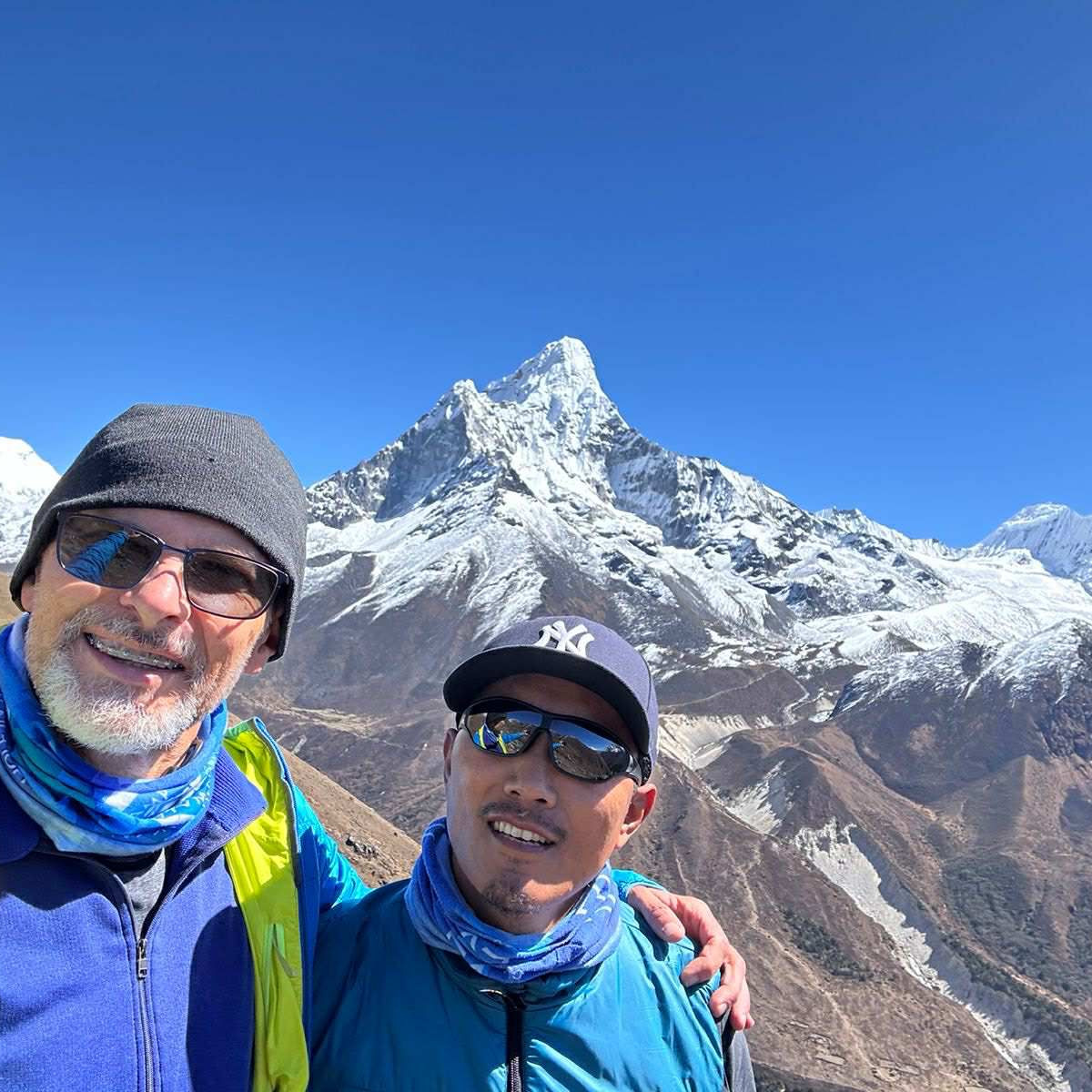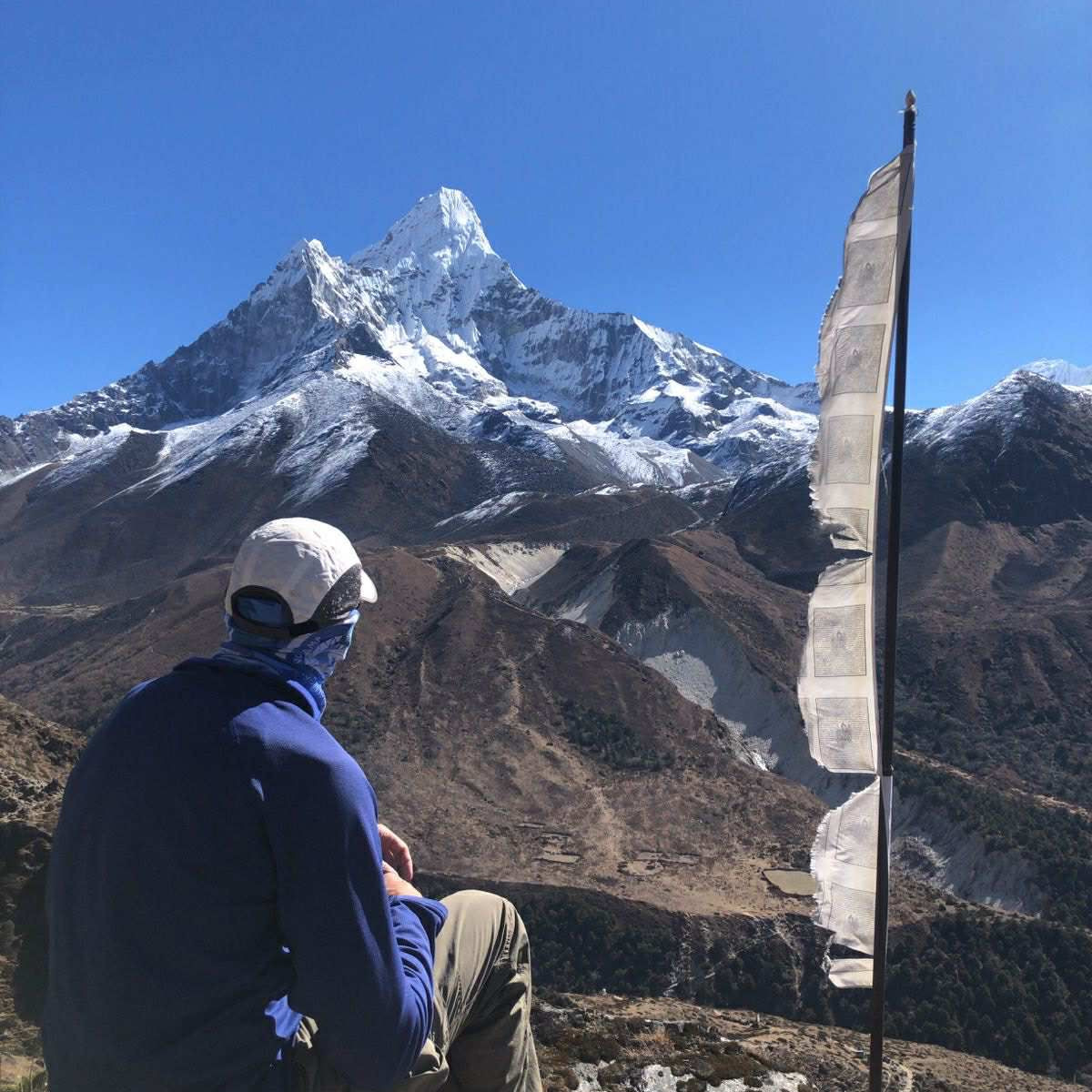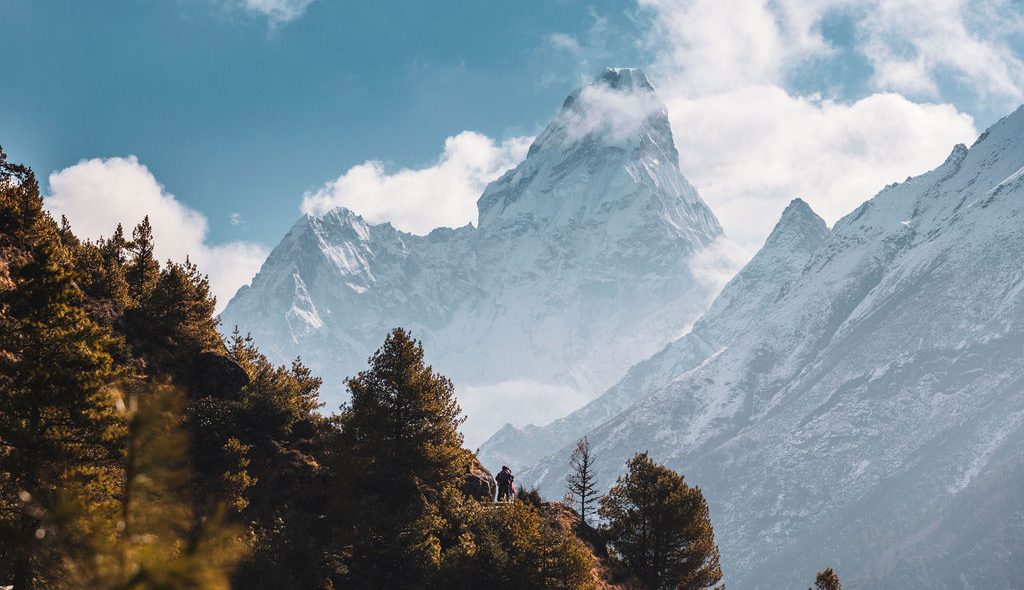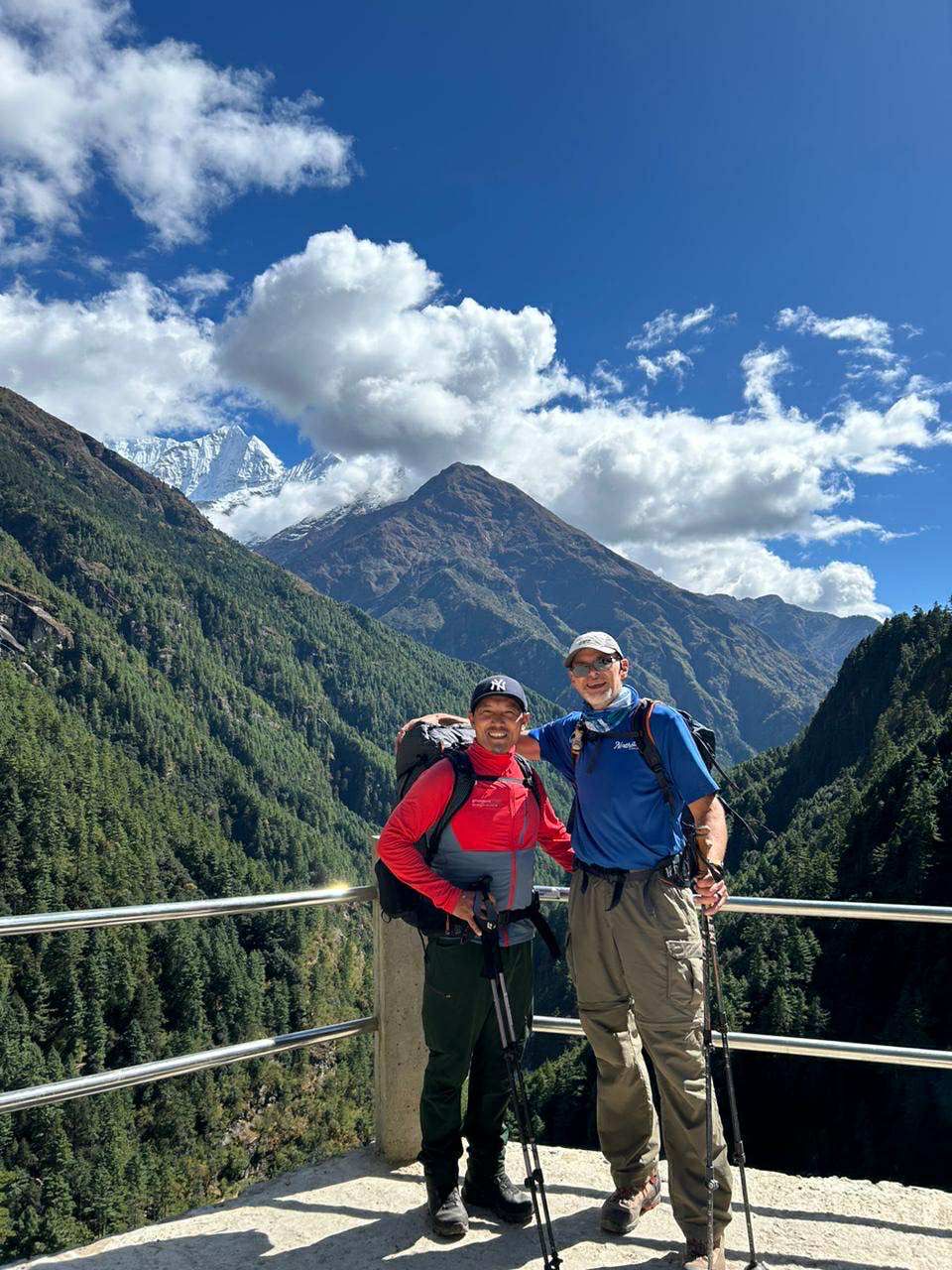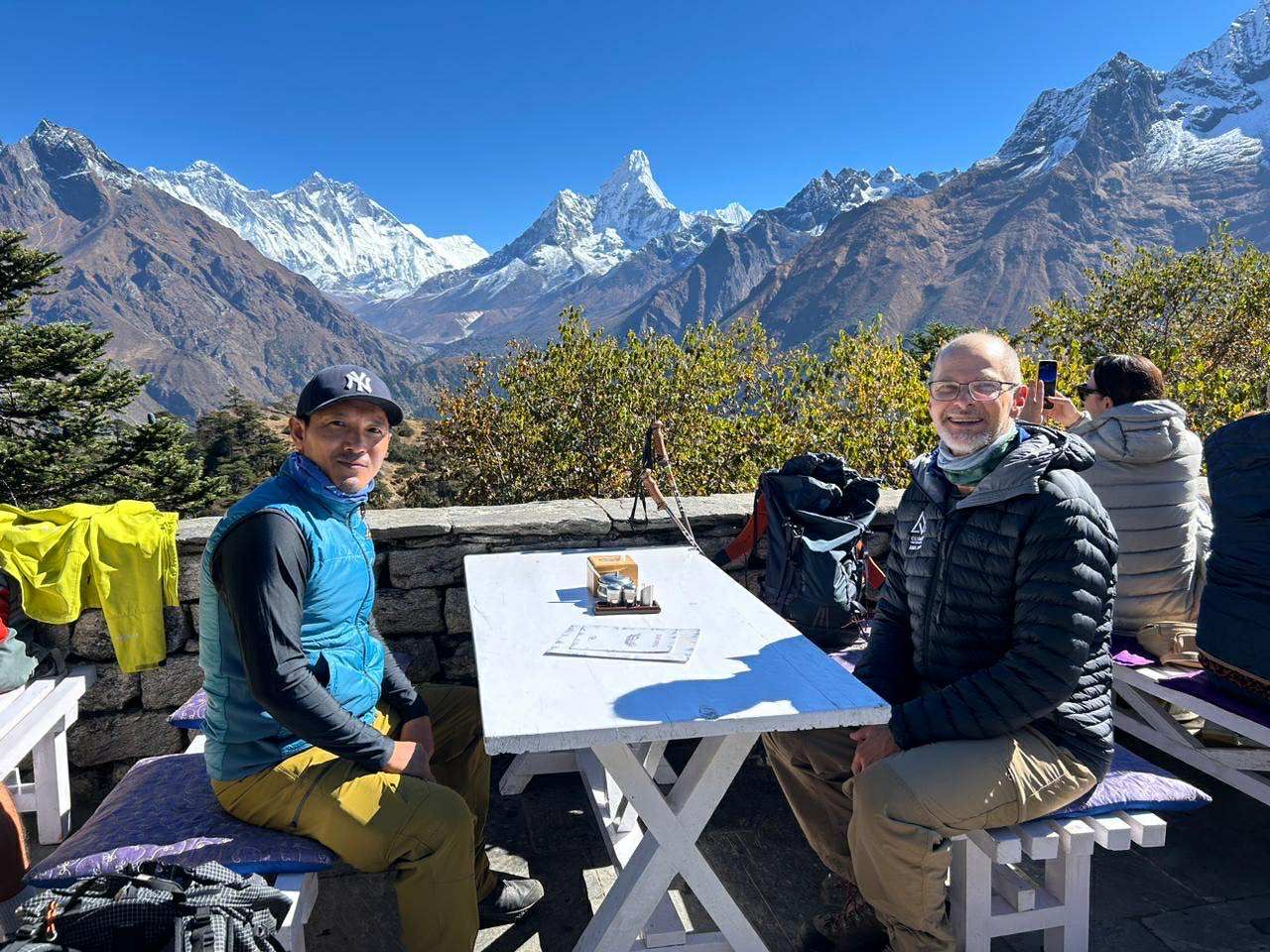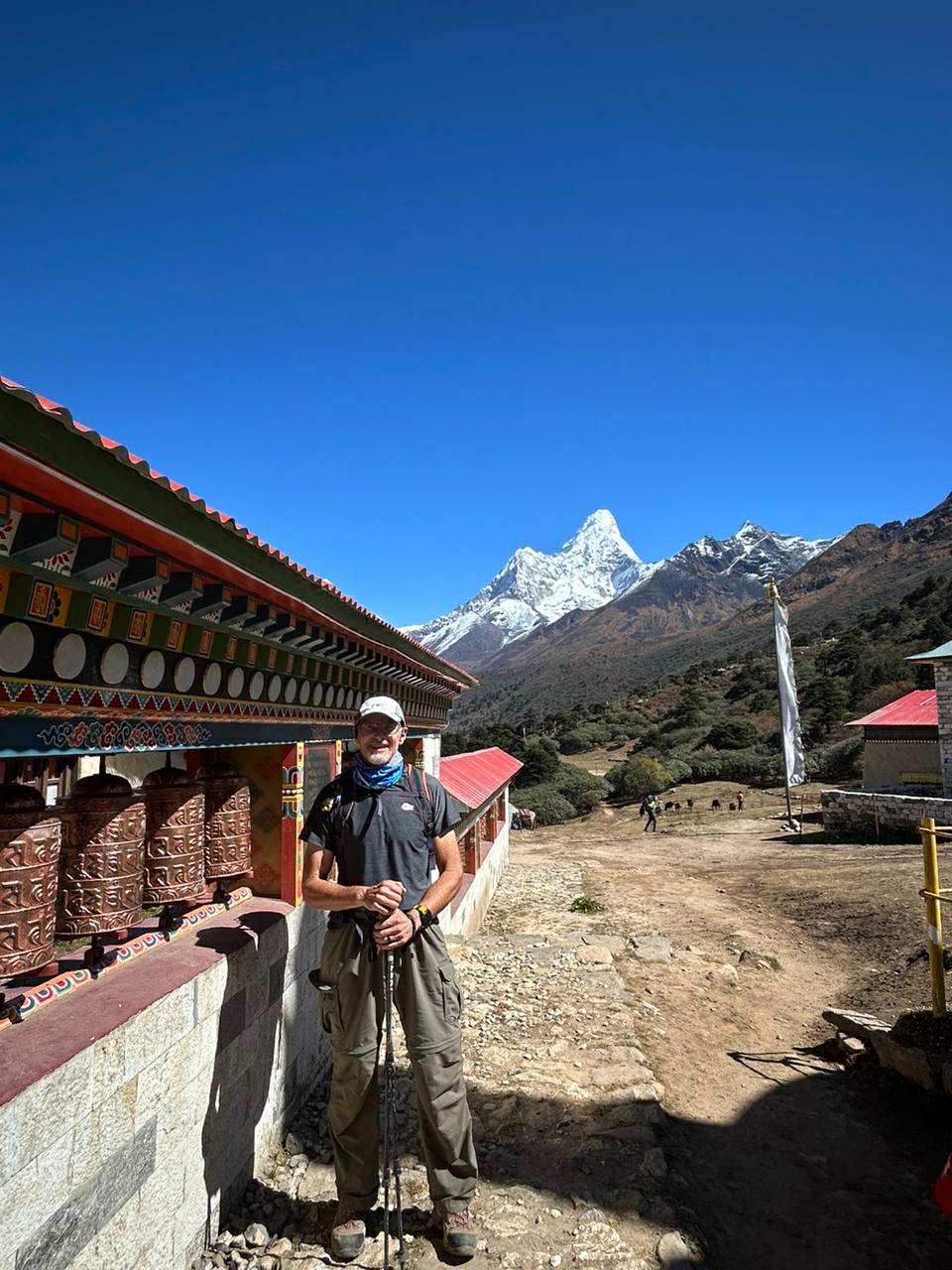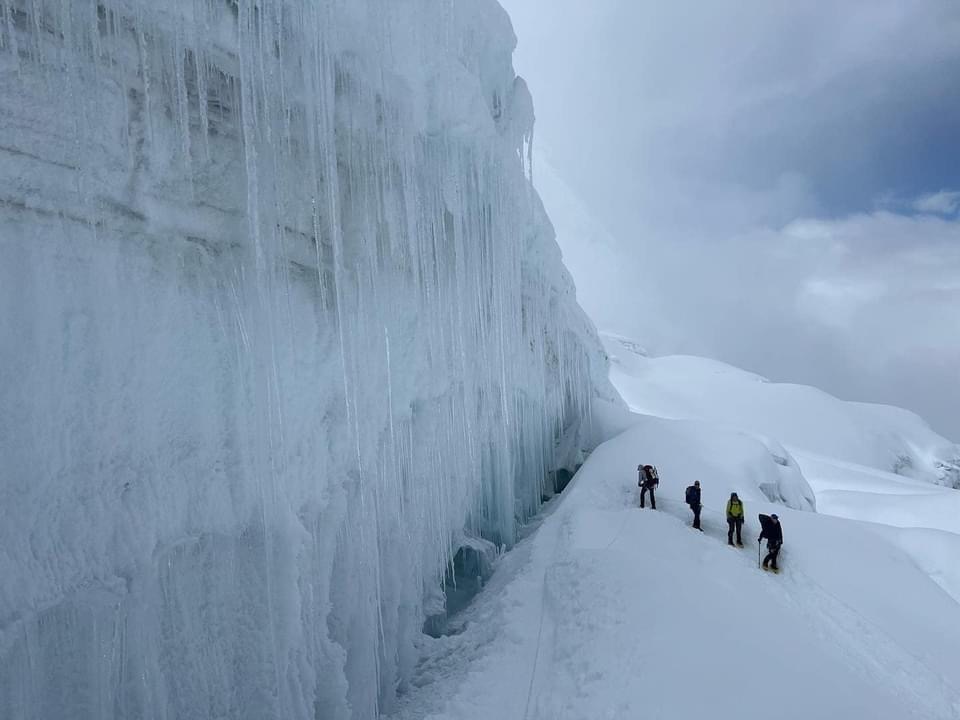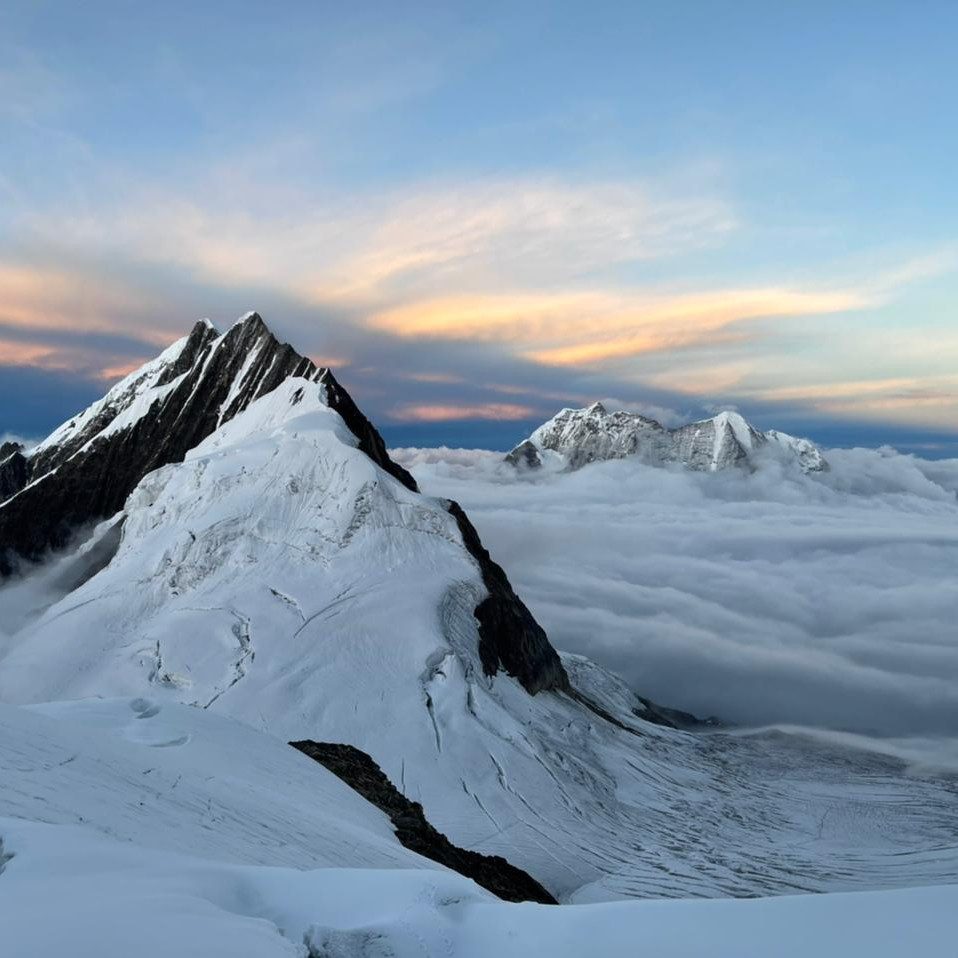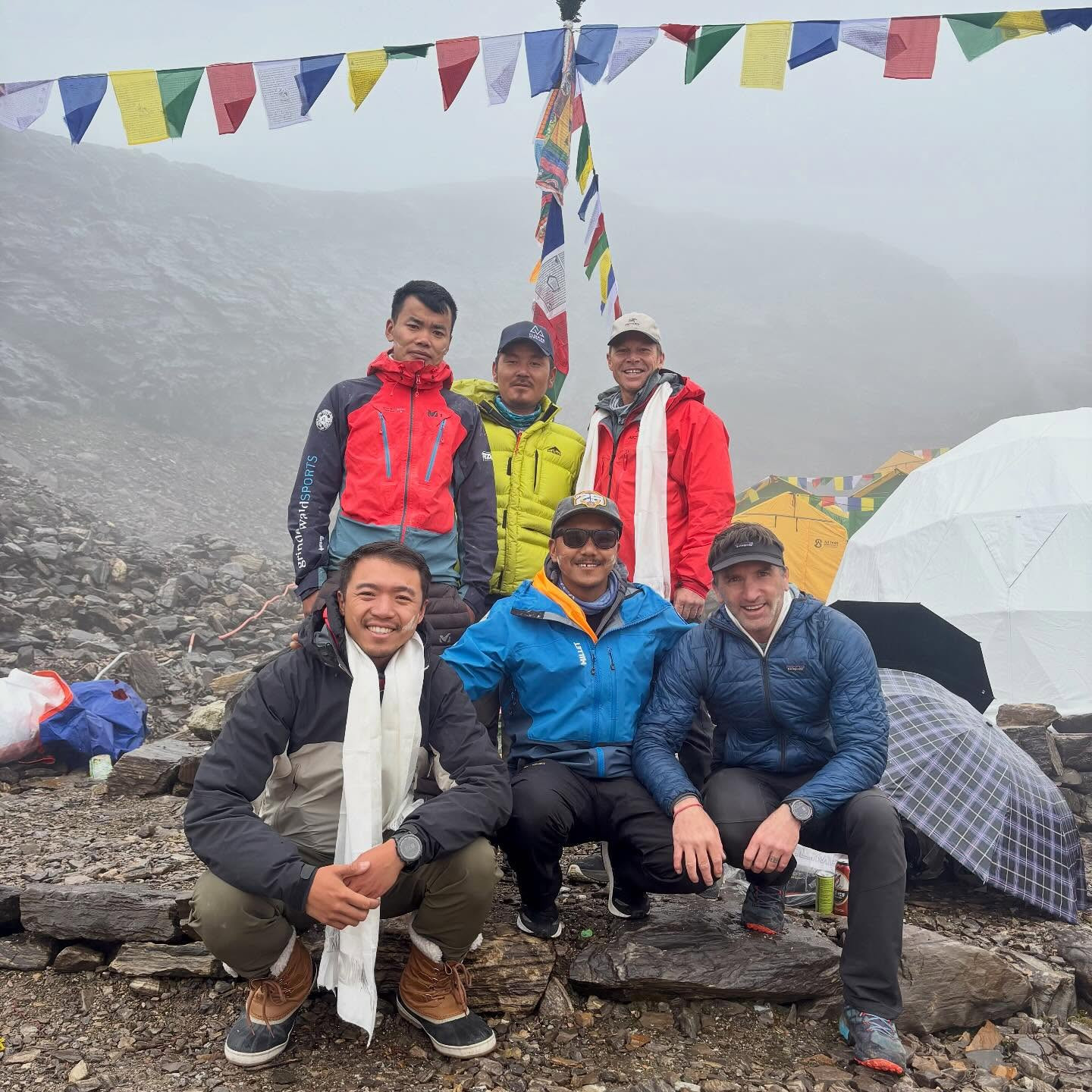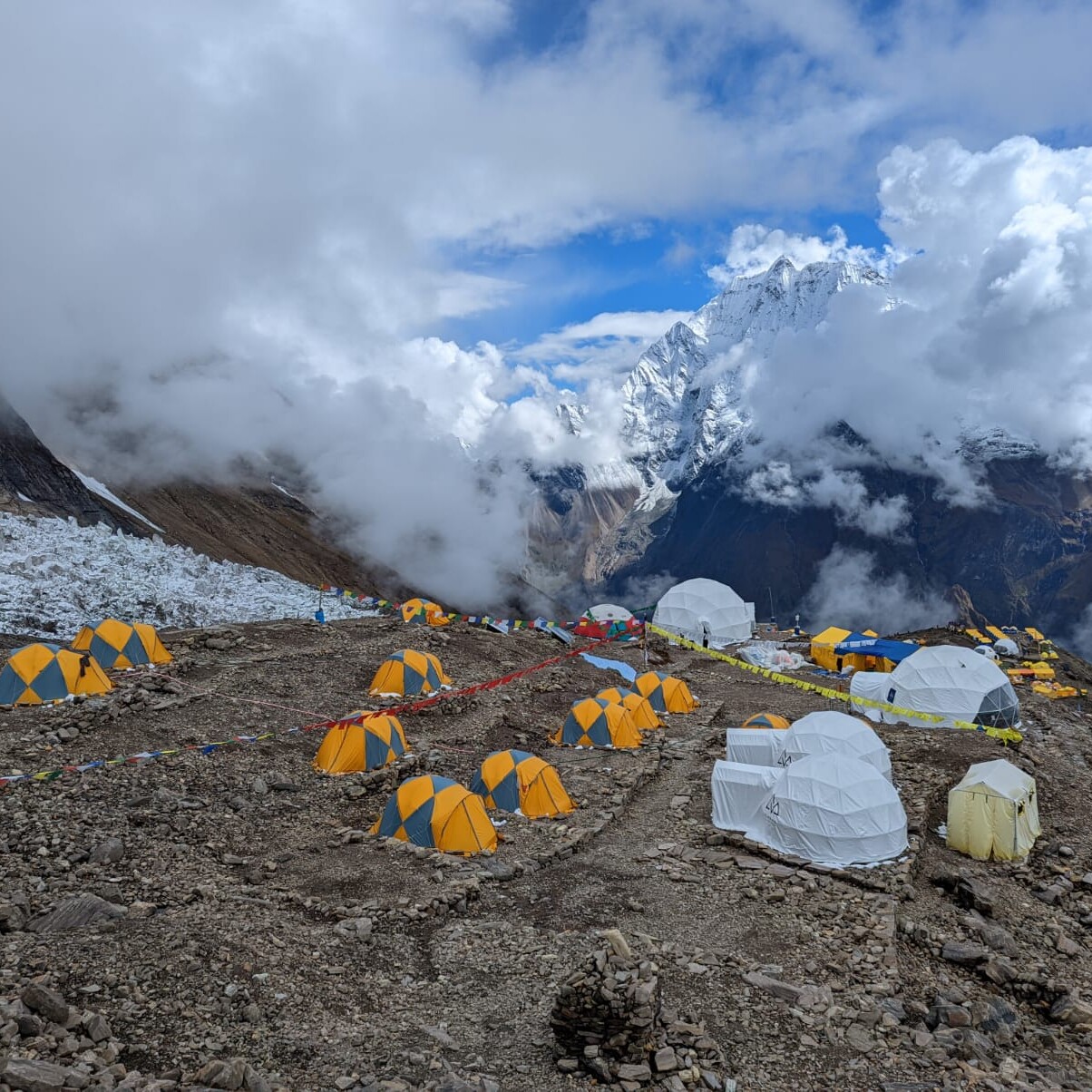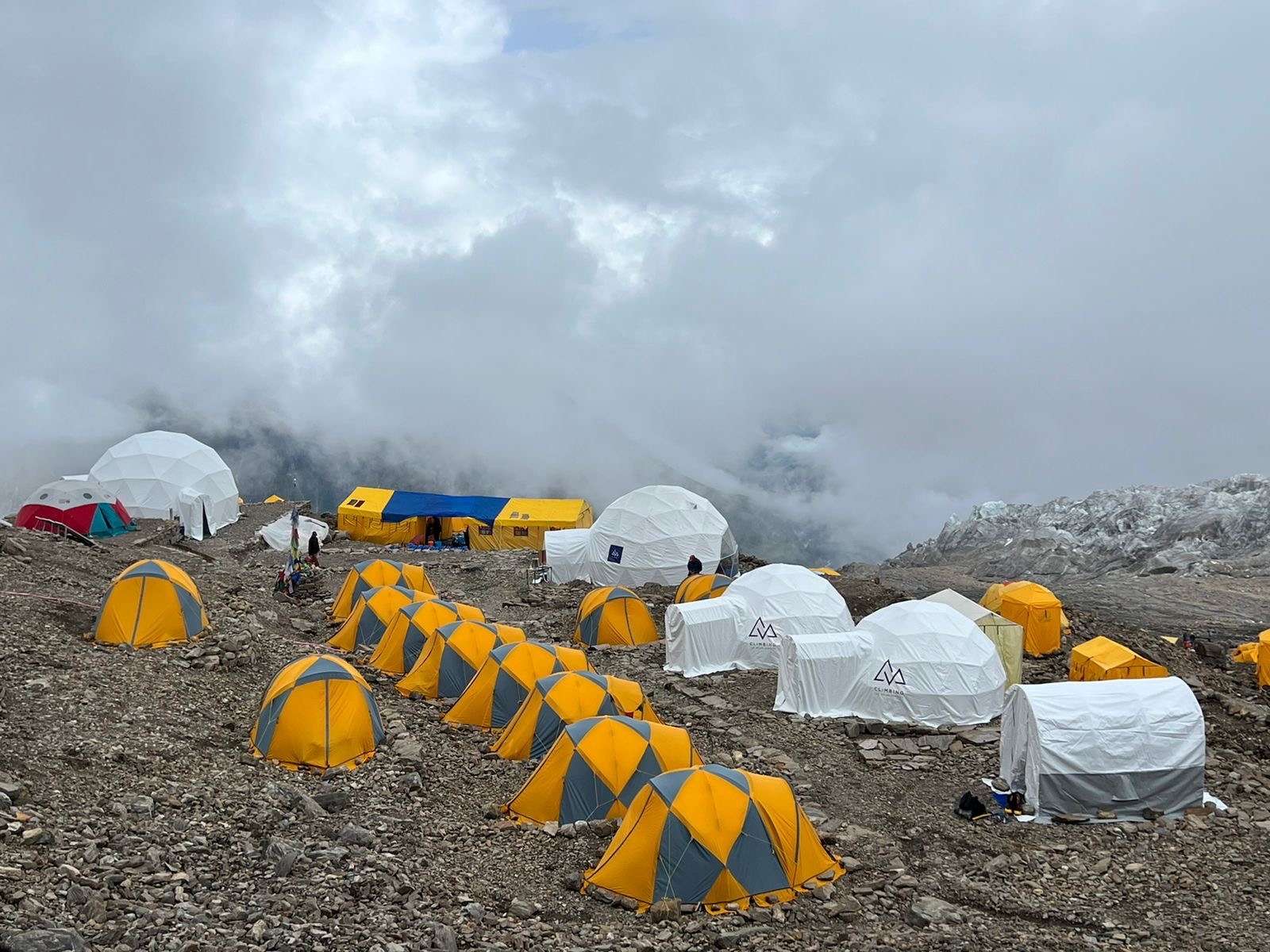High Winds and Smart Decisions on Mera Peak
High Winds and Smart Decisions on Mera Peak
Julie M. and CTSS guide Tendi Sherpa reached Mera Peak’s high camp but made the call not to push for the summit. As Julie shared, “Sometimes the mountain says no. The winds were absolutely insane, so we made the call to not attempt the summit. Very glad we didn’t, the teams that went up almost all turned around and now a bunch of rescues.”
A tough but wise decision, one that reflects the judgment and humility that define great climbers.
Elsewhere in Nepal, our Ama Dablam team is wrapping up their expedition, arriving in Lukla today before flying back to Kathmandu tomorrow. Meanwhile, our First Ascent team has reached Jumla and will begin the journey home with a jeep drive to Surkhet tomorrow morning, followed by a flight back to the capital.
Photos from Julie M.
Summit Season in Motion: Ama Dablam, Mera Peak, and Ecuador
Summit Season in Motion: Ama Dablam, Mera Peak, and Ecuador
Across the Himalaya and the Andes, our CTSS teams are climbing strong and moving with intention.
In Nepal, CTSS guide Lhakpa Sherpa and clibmer Norman Croucher topped out on Ama Dablam (6,812m) early this morning, November 6th, after days of patience and smart positioning around both weather and crowding. Their timing paid off. They reached the summit under calm skies and are now safely back at High Camp, with plans to return to Base Camp tomorrow.
Elsewhere in the Himalaya, CTSS guide Tendi Sherpa and climber Julie M. are trekking toward Mera Peak (6,476m), moving through the villages of Kothe and Thagnag. Along the way, they paused to visit a monastery tucked inside a mountain cave at Thagnag for a quiet moment to reflect. This duo has now officially reached Khare Base Camp, and acclimatization hikes from Base Camp are already underway.
“Days on the trail, almost by ourselves, sunny days and fresh snow ~ perfection.” — Julie M.
And on the other side of the globe, in South America, CTSS guide Edgar Parra has welcomed our Ecuador Volcanoes team to Quito. Following a festive welcome dinner, the group is ready to begin their journey through the Avenue of Volcanoes, where classic Andean peaks and rich cultural landscapes set the stage for the climbs ahead.
Different peaks, same goals, safety and success, always in that order.
Photos below from Edgar and Julie.

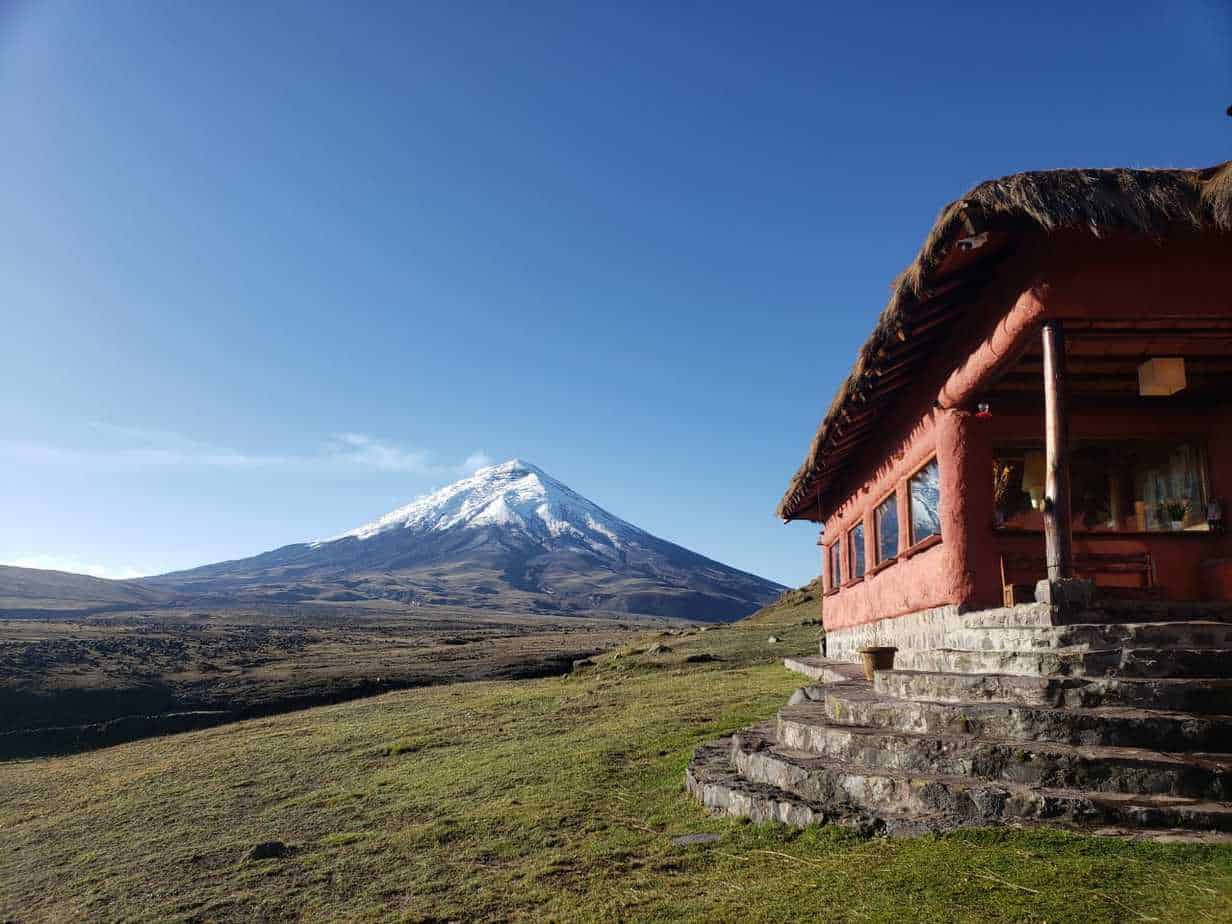
Teams Progress as Skies Clear Over the Himalaya
Teams Progress as Skies Clear Over the Himalaya
Here’s the latest from our teams in Nepal as clear skies return to the region and flights to and from Lukla resume.
Our First Ascent team has made the decision to retreat after heavy snowfall swept across the Himalaya. They’re now on their way back to Jumla, scheduled to arrive on November 8th, with a flight to Kathmandu planned for the following day.
On Ama Dablam, Norman and CTSS guide Lhakpa are managing the mountain’s current congestion by holding at Camp 1 for a rest day. Both are fully acclimatized and ready to move higher but are wisely waiting for the right window as crowds thin and weather stabilizes.
Meanwhile, Julie and Tendi Sherpa are en route to Mera Peak. After flying to Lukla yesterday, they spent the day acclimatizing with a hike to 4,000 meters. Tomorrow, they’ll move to Thangnag at roughly 14,000 feet (4,267 meters) as they continue their journey toward the summit.
Photos Courtesy of Julie M.
The Mother-Son Summit: Kristin & Simon’s Kilimanjaro Adventure
The Mother-Son Summit: Kristin & Simon’s Kilimanjaro Adventure
Some climbs are about summits. Others are about stories, and the people you share them with.
For Kristin and her 12-year-old son Simon, their Kilimanjaro expedition became both a test of endurance and a shared journey between mother and son that changed how they see each other, and the mountains, forever.
They trained side by side for months—running, hiking, and swimming—trading weekends with friends and dive competitions for long miles under heavy packs. It was the first time they had ever trained for something together, and the shared challenge brought them closer in ways neither had expected.
Preparing from their low-altitude home, they improvised, with heat replacing thin air and determination replacing elevation. To simulate altitude before the trip, they flew to Colorado to hike a 14er. When a snowstorm swept in near the summit and they sheltered in a rock cave, they realized they were learning lessons far bigger than fitness. Kristin recalls the learning curve they had to adapt to, such as when to keep pushing, when to pause, and, of course, when to turn around.
Alongside them was CTSS guide Pega Sherpa, an eight-time Everest summiter known for his quiet strength, humility, and generosity. His steady presence on the mountain would become a defining part of their experience, and a friendship that’s lasted long beyond the climb.
These moments brought this mother-and-son duo closer, shaping the bond that would carry them to the Roof of Africa.
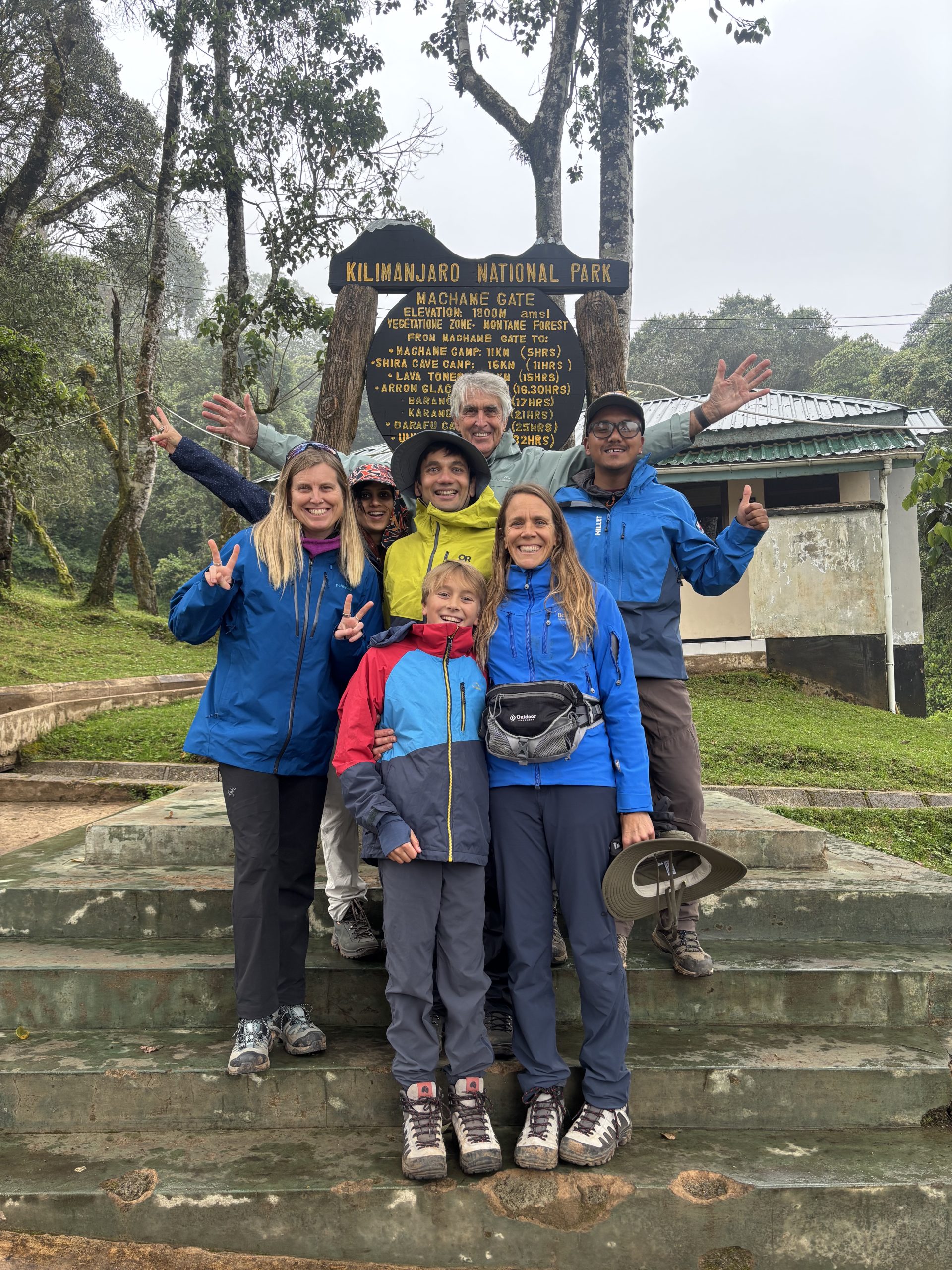
Kristin, how did it feel to be standing on the summit, staring out at the roof of Africa together?
“It was overwhelming. We were both in tears from the relief and wonder of actually realizing our dream. Simon had pulled ahead of the group with Mary, our head Tanzanian guide, and I watched from a distance to see him approaching the summit.
For me, it was one of the most emotional experiences of my life, something I compared only to childbirth. To watch my son, who had nurtured a dream from a seed to its completion, in the protective hands of a team of adept mountaineers—it was truly soul-filling. The team was so supportive of both of us, but they picked Simon up in the air, whooping and celebrating his victory. It was such a beautiful thing, full of pride, joy, and the relationships that had developed through such an intense and amazing feat.”
Before that moment on the summit, the real work began long before they reached Africa. Kristin and Simon shared what it was like to train together for Kilimanjaro.
“The process definitely brought us closer, as we had never trained for anything together up until that point. There were weekends when, instead of spending time with friends or competing on the dive team as in summers past, we went out for solo hikes, runs, or swims. Living at low altitude, we had to get resourceful—carrying heavy packs, hiking up to fifteen miles in the heat, and eventually flying to Colorado to hike a 14er to simulate altitude. There was a real learning curve with gear and pacing—when to push through and when to pause and reassess. Those challenges brought us closer and prepared us for the unknowns of Kilimanjaro.”
Shared Summits, Shared Generations
Kristin and Simon were not the only family team on the summit of Kilimanjaro that day. A father–daughter duo also shared the trail with them, adding to the sense of community that makes CTSS climbs so special. Watching different generations move toward the same goal brought something unique to the mountain, a reminder that adventure has the power to connect us at any age.
At CTSS, we’ve seen this again and again. Intergenerational climbing has become one of the most inspiring themes across our expeditions, and for good reason. Research shows that engaging in outdoor activities together across generations strengthens family bonds, communication, and mutual understanding. On the mountain, those benefits come to life in real time. Families learn to move at each other’s pace, trade leadership, and rediscover the value of shared challenge.
This year alone, we’ve seen that spirit unfold across continents. Emma and Sam Schwerin have climbed side by side from Ecuador, Kilimanjaro, and Mont Blanc to Denali, Aconcagua, and Everest, where Emma became the youngest American woman ever to reach the summit. Their journey to complete the Seven Summits has been a shared pursuit from the very beginning, a testament to how partnership and family can carry you to the world’s highest places. Also in Nepal, but on a different journey, Ethan Ong and his father, Harold Ong, took part in our Rugged Luxury Everest Base Camp Trek and Stay, where Ethan not only completed the trek to Everest Base Camp but also raised more than $9,000 for the Tendi Sherpa Foundation, proving that purpose and adventure can go hand in hand.
For Kristin and Simon, Kilimanjaro became part of that same story. Their climb reflected what we believe at CTSS: that the mountains are more than destinations. They are classrooms for patience, trust, and teamwork, places where generations come together to learn from each other, supported by guides who embody that same spirit of belonging and shared purpose. Our world-class team doesn’t just lead the way; they walk beside you, helping each climber find confidence that lasts long after the descent.
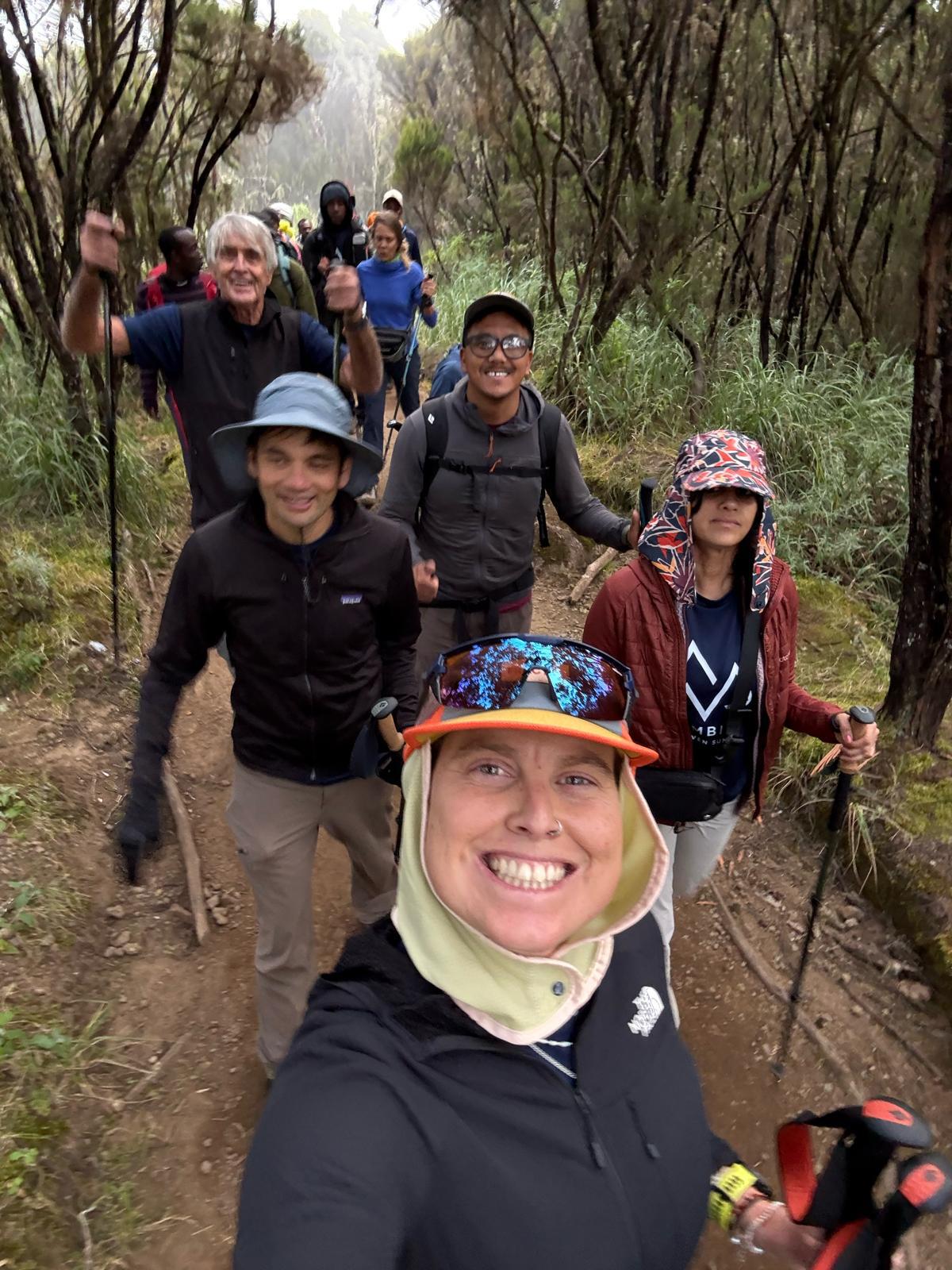
You climbed alongside Pega Sherpa, one of our top Everest guides. Simon, what did you learn from his leadership and experience on the mountain?
“Pega was so amazing. He told me about all kinds of different mountains he had climbed or wanted to climb in the future. I asked him so many questions about Everest and the Himalayas.
One day, my sleeping mat popped, and Pega gave me his because he said he didn’t need it. On summit day, he helped me feel better and told me to put on a hat because my head hurt. Five minutes later, my headache was gone. I just can’t believe how many mountains he’s climbed. He’s such an amazing guide, and I hope to climb with him again.”
For Kristin, watching Pega guide her son was something she’ll never forget.
“Pega was an incredible leader. He has an extensive mountaineering skillset, including hundreds of technical climbs throughout Nepal and eight Everest summits. Where some people might develop an ego around such mastery, Pega was the opposite—always humble, always calm, always helpful.
He carried our heavier items to lighten our load, lent us his sleeping mat when ours popped, gave Simon inspiring advice, taught him card tricks, checked our oxygen levels and heart rates every night before bed, and made us laugh.
We were all in tears when we had to part ways. We’re sure we’ve made a friend for life in Pega and continue to stay in touch. Simon follows Pega on Instagram and loves seeing his radical climbs throughout Nepal.”
Beyond the climb itself, you also experienced Tanzania—the food, the culture, and even waterfall and village tours before the expedition. Kristin, what stood out to you most?
“We spent a lot of time in the van traveling from place to place, and it gave us an opportunity to observe people we would never have seen otherwise. We were amazed to see young children walking unaccompanied to and from school, sometimes in uniforms, along busy highways.
The porters were incredible athletes, carrying up to twenty kilograms each day and arriving to camp hours before us. Other children had built toys out of bottle caps and scraps—showing such creativity and resilience.
At a coffee farm, we saw an extended family running the business together from plant to roast to sales, with song woven into every part of the process. That same joy and music carried us up the mountain on summit night. Whenever I felt overwhelmed, our guides’ voices seemed to lift me up and carry me. It was a transcendent, spiritual experience—hope, aspiration, determination, and teamwork all in one.”
Simon, you were our youngest climber to summit Kilimanjaro. How does it feel to tackle something so big at your age?

“I read a book in school called No Summit Out Of Sight, about Jordan Romero’s journey to climb the Seven Summits. It inspired me to climb Kilimanjaro and maybe more. If I’m being honest, I didn’t know I was CTSS’s youngest Kilimanjaro climber until after our trip. It was so amazing to be standing up there on the roof of Africa as a 12-year-old. I have been hiking my whole life, but never at high altitude.
Whenever I face a challenge now at home, I think of Kilimanjaro. If I can climb Kilimanjaro, I can push through and finish this. This was probably the most memorable thing I have done, and I can’t wait for the Mount Baker Alpine Academy next summer with CTSS.”
School is back in session, so we’re eager to know what you’ve told your friends about this experience. How do you describe what you achieved and learned?
“In Lexington, Kentucky, no kids really understand how difficult mountaineering is, nobody does it. When I got back to school, everyone was like “wow! You climbed Kilimanjaro”, and then forgot about it. One person actually congratulated me and made me feel really good about what I had done: my best friend, Aleksa. I called him every night before the climb, even though there was a seven-hour time difference. Anytime I got reception on the mountain, I tried to call him. My sixth-grade English teacher, Mrs. Hamby, had me read the book that inspired me, No Summit Out Of Sight. This year, I am going to be a guest speaker in her class when they are reading the book.”
Shared Summits, Shared Generations
Kristin and Simon’s journey to the Roof of Africa marked the start of a new kind of confidence, the kind that only comes from facing something vast together and emerging stronger on the other side. It reminded them that patience and trust sit at the heart of every challenge, on and off the mountain.
Their guide, Pega Sherpa, modeled that same quiet strength throughout the climb, steady, attentive, and deeply present. Guides like Pega embody what makes CTSS expeditions so unique: world-class skill paired with humility, heart, and genuine care for every climber’s journey.
For the Weeks-Sweeney family, that leadership turned an extraordinary adventure into a life-changing experience.
At CTSS, we believe mountains have the power to shape lives and strengthen relationships, one step and one shared summit at a time.
If you’re ready to start your own journey with a parent figure, or with a young person in your life, join us for a Rugged Luxury trek to Everest Base Camp, Kilimanjaro, or Machu Picchu, or for one of our introductory mountaineering courses on Mount Baker—where you just might bump into Kristin and Simon.
Himalaya Weather Update
Himalaya Weather Update
Due to current weather conditions, all CTSS teams are safely holding in place across the Himalaya. The First Ascent and Ama Dablam teams are standing by at their respective Base Camps, waiting for a safe weather window to begin their summit pushes. Both teams are fully acclimatized and ready to move as soon as conditions improve.
Meanwhile, our final climber of the season, Julie, a Seven Summits finisher, is in Kathmandu with CTSS guide Tendi Sherpa. After weather delays prevented their initial flight, they will remain in Kathmandu for a few days before departing on November 1 for Kothe, the gateway to Mera Peak.
We’ll share further updates as conditions evolve across the region.
Photos from the CTSS Archives of our 2024 First Ascent Team.
Rotations for Ama Dablam and First Ascent Teams
Rotations for Ama Dablam and First Ascent Teams
Our fall Himalayan season continues to unfold with steady progress across the range.
On Ama Dablam, the team has now completed their first acclimatization rotation, climbing up to Camp 2 before returning to Base Camp to rest and recover. Everyone is feeling good, and with a solid rotation under their belts, they’re aiming for a summit push in the coming days, conditions permitting.
Meanwhile, our First Ascent team has safely reached Base Camp. Reception is nonexistent in this remote valley, but one of our crew hiked down to make a call and pass along updates — the team is healthy, spirits are high, and all is running smoothly. Tomorrow, they’ll complete an acclimatization hike to roughly 5,200m before returning to BC to continue preparing for the climb ahead.
And in transit to the Himalaya, CTSS climber and Seven Summits finisher Julie is on her way to Nepal for a private custom itinerary with CTSS guide Tendi Sherpa, who also guided her on Everest in 2023. This journey includes a visit to Tendi’s home village—a truly special experience—followed by a climb of Mera Peak. We’ll share her blog so you can follow along as she documents her adventure from the trail.
More updates coming soon as our teams move higher into the season. Photo from CTSS Guide Lhakpa on Ama Dablam.
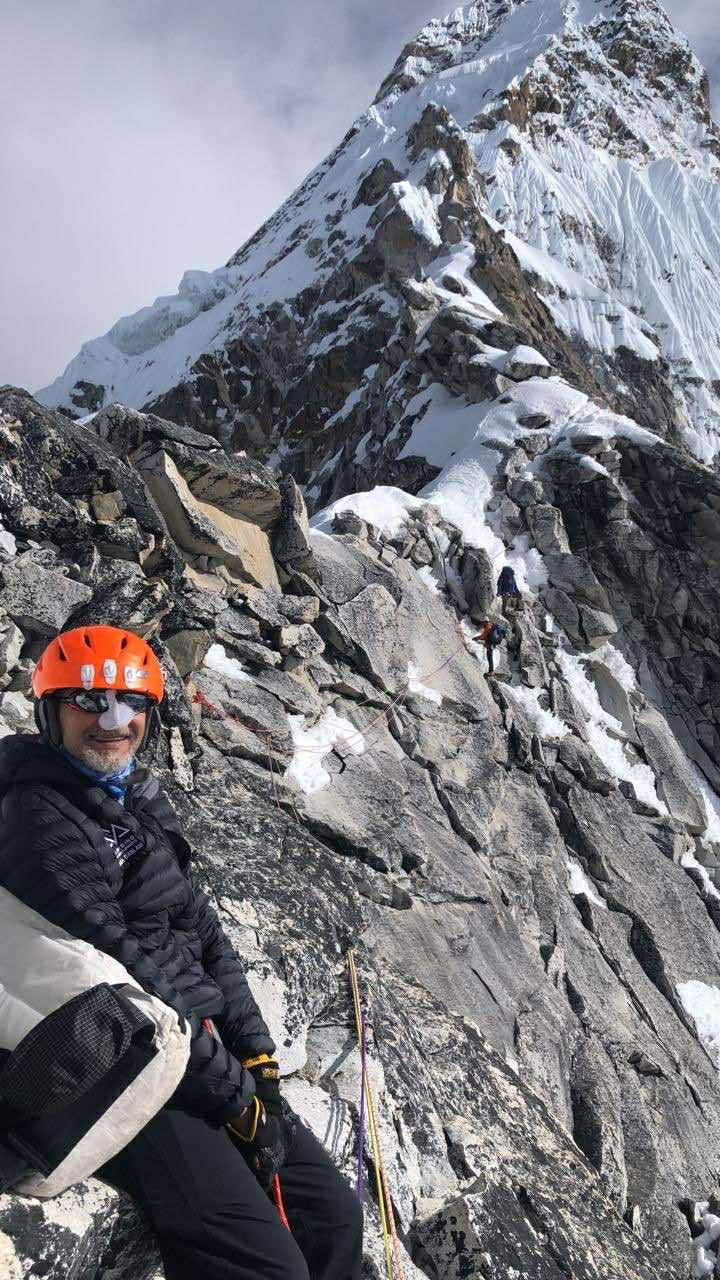
Puja Day on Ama Dablam
Puja Day on Ama Dablam
Norman and CTSS guide Lhakpa are settling into Ama Dablam Base Camp, where they enjoyed clear skies. The team reports good sprits and are happy and healthy, a win-win in our book!
This morning, the team took part in the Puja ceremony, a traditional blessing led by our Sherpa team to ask the mountain for safe passage. It’s an important moment on every Himalayan expedition, marking the official start of the climb and bringing the whole team together with intention and respect.
With the Puja complete, they’ll move into their first acclimatization rotation tomorrow. More updates to come as they work their way up the mountain.
Photos from CTSS guide Lhakpa
Fall in the Himalaya: Teams on the Move
Fall in the Himalaya: Teams on the Move
Our fall Himalayan climbing season continues with two CTSS teams on the move.
The First Ascent team has flown to Nepalgunj and heads to Jumla tomorrow to begin the approach to their unclimbed objective. This program is a once-in-a-lifetime chance for these climber to make a first ascent in Nepal and secure a place in the history books. Hidden deep in a remote, seldom-explored region of the Himalaya, the mountain’s location remains top secret, known only to the committed climbers on our team.
Meanwhile, Ama Dablam private climber Norman and CTSS guide Lhakpa are enjoying clear skies and crisp fall conditions in the Khumbu Valley. After reaching Pangboche yesterday, they’re moving steadily toward Ama Dablam Base Camp on what many call the most beautiful mountain in the world. Rising in a graceful sweep above the Khumbu, Ama Dablam is a dream peak for climbers ready for steeper, more technical terrain, a stand-alone goal or ideal preparation for 8,000-meter summits.
As our season continues to unfolds, be sure to stay tuned for more updates from the field.
Photos from CTSS Guide Lhakpa en route to Ama Dablam
Manaslu Advice from Mike Hamill
A Personal Welcome to Climbing the Seven Summits’ Manaslu Program from Mike Hamill
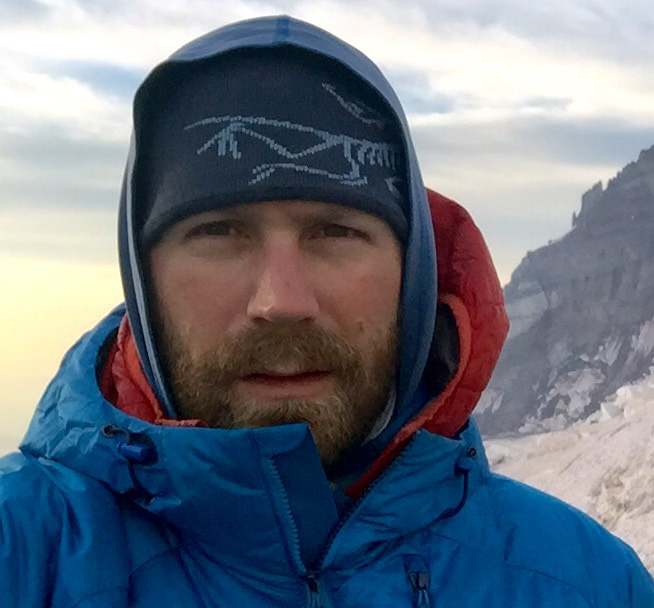
Manaslu is a mountain with a magnetic draw—not just for the awe-inspiring peak itself but also for its surroundings, with ancient trade routes crisscrossing the region, rich tradition emanating from the silent monasteries of Lho, and the tracks of the elusive Himalayan snow leopard, which seeks sanctuary in these quiet valleys. It’s a special mountain and a gem in the Himalayas, and we are honoured to be able to guide it.
I love seeing our clients enter the new realm of climbing 8000m peaks, and facilitating that safely and in good style is our top priority. I, along with all of the CTSS guides and team, will draw on decades of first-hand guiding experience to offer you the highest chance of success at an exceptional value. In fact, well over 150 summits have been achieved on 8000m peaks, beyond Everest, under my direct guidance, so we are well acquainted with the territory.
I also extend an invitation to Manaslu climbers to invite their friends and family to join them on this exotic journey by participating in our Manaslu Cultural Trek. You will have the opportunity to share many cultural experiences, as well as spend time at base camp. Friends and family will have the chance to complete the crossing of the Larkya-La pass and descend into the legendary Annapurna trekking circuit after bidding us farewell at base camp, allowing them to experience a high pass and a step onto two famous treks in one. This time together often makes these long expeditions more doable from a time-away perspective.
We look forward to sharing a great experience with you on Manalsu, and I look forward to communicating with you directly regarding the expedition options.
Best regards,
Mike Hamill
Owner and Director, Climbing the Seven Summits
Manaslu Training & Prerequisites
Experience Level
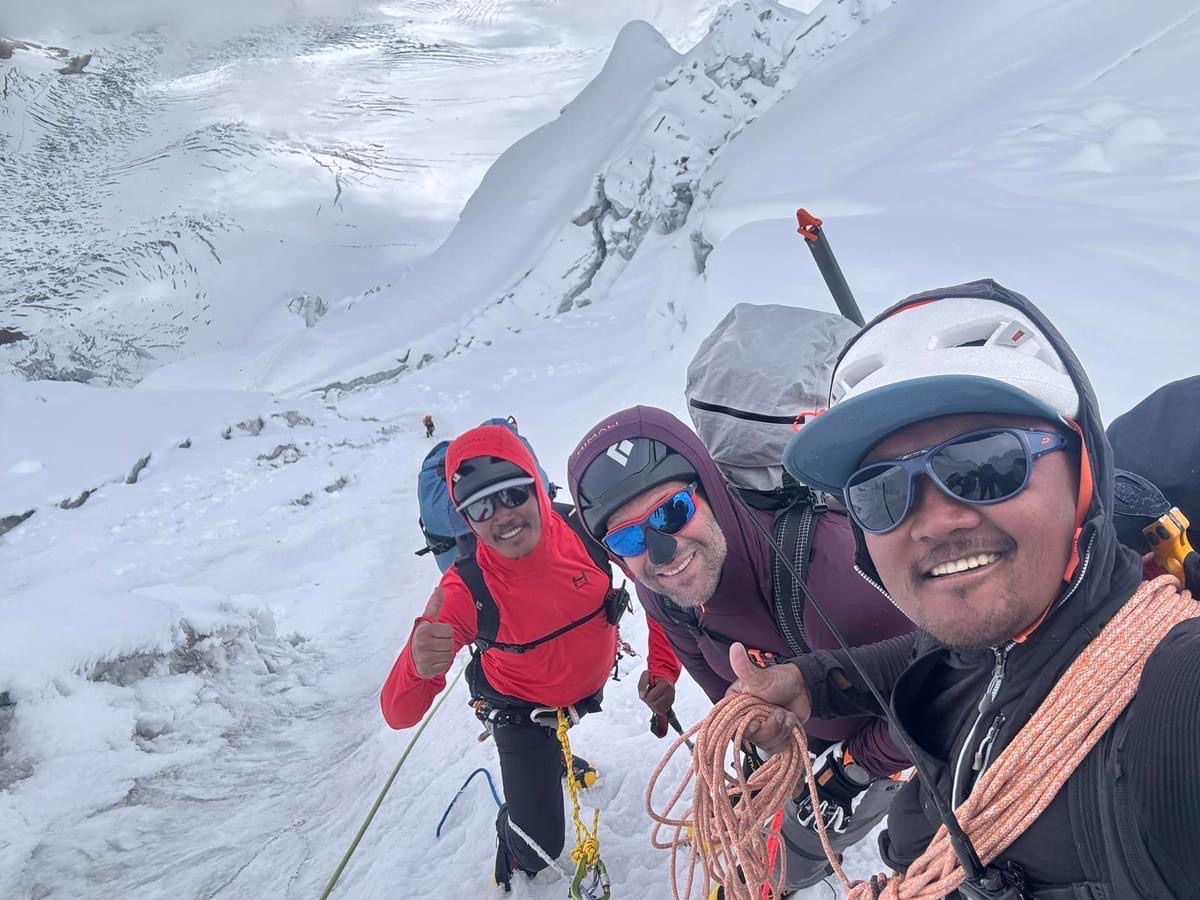
Climbing Manaslu requires serious fitness, the ability to perform well at altitude, a mindset to be away from home for six weeks, and a desire for rugged adventure travel. Climbers need to be experienced with solid cramponing skills and familiar with glacier and fixed-line climbing. Prior experience on high-altitude peaks is expected. If you want to join this expedition but are concerned with your experience level, we can work with you to get you up to speed before the climb. Please let us know, and we will be happy to help.
Manaslu is still a very remote and rugged place, with few of the creature comforts we have come to expect in the West. So, don’t plan on being pampered with smooth roads, 5-star tea houses, and blazing-fast internet. We strive to provide our climbers with all the creature comforts possible, but at the end of the day, this is remote Himalayan travel and true adventure travel.
Physical Training
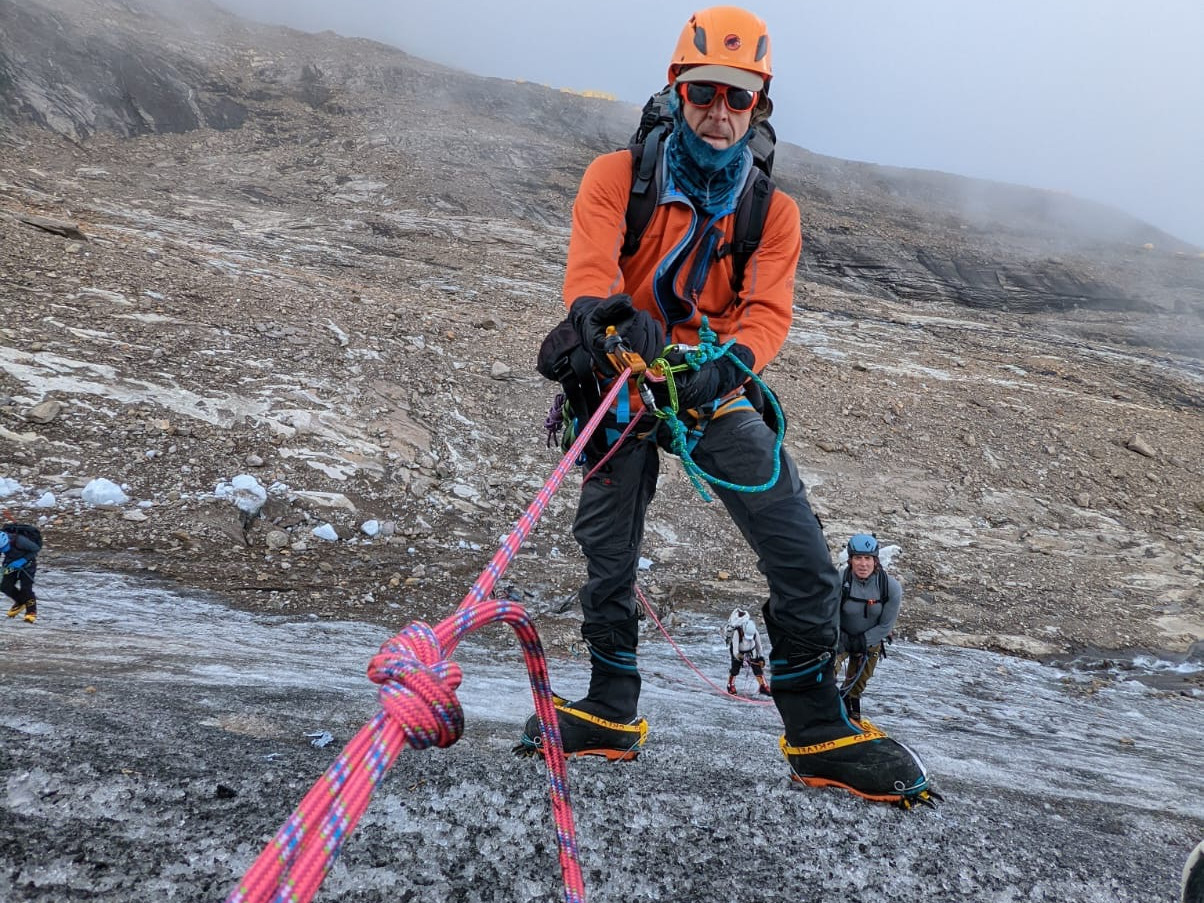
You need to be very physically fit and able to dedicate time to climbing-specific training in the lead-up to your expedition. Being in top shape will also ensure you enjoy your climb, feel good throughout, and get the most out of the experience.
It is vital that your training closely simulates what you will be doing on the mountain. Traditional gym workouts or general fitness plans often lack targeted focus. Instead, you need to emulate long physical days (8+ hours) in the mountains
We recommend that you:
- Start specific mountaineering training at least three months in advance
- Train at least 4-5 days a week for an hour or more
- Focus on high-volume but low-intensity training
- Don’t forget to include cardio, strength training, and stretching in your routine.
- A good goal is to be able to comfortably climb 1,500 vertical feet per hour with a 40lb pack.
- Schedule a few weekends where you can spend two or more consecutive full days. Multi-day hikes that involve carrying a pack with significant elevation gains and descents are ideal.
Mindset
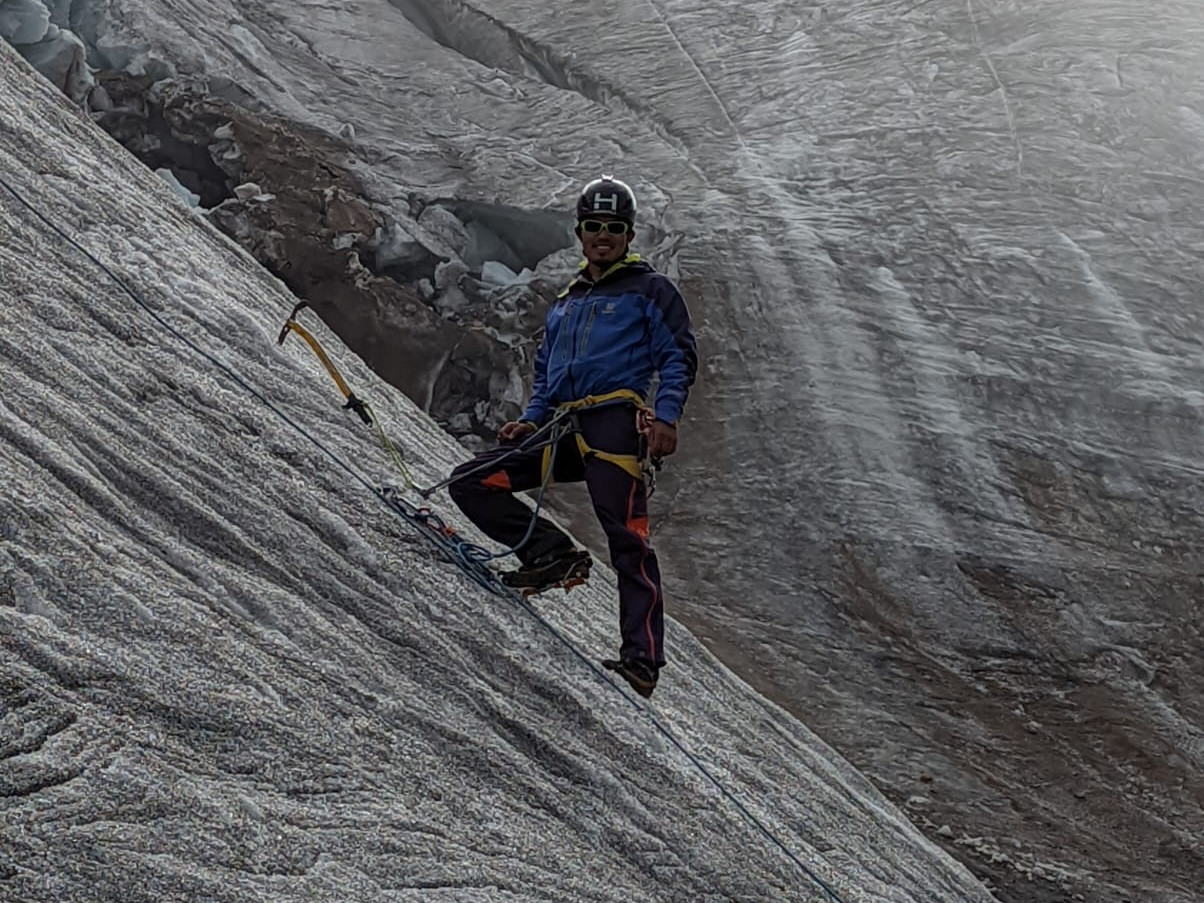
Mindset and mental preparation are integral to your success on any peak. You should be prepared:
- To be away from home/work for the duration of your climb
- Have a desire for rugged adventure travel
- Be open to receiving and deferring to guidance, support, and advice from your guides/expedition leaders (even if you are an experienced mountaineer)
- Be comfortable having open conversations with your guides
- Be able to work well in a team environment by being supportive and respectful of fellow teammates
- Be humble, respectful, and considerate even under pressure
